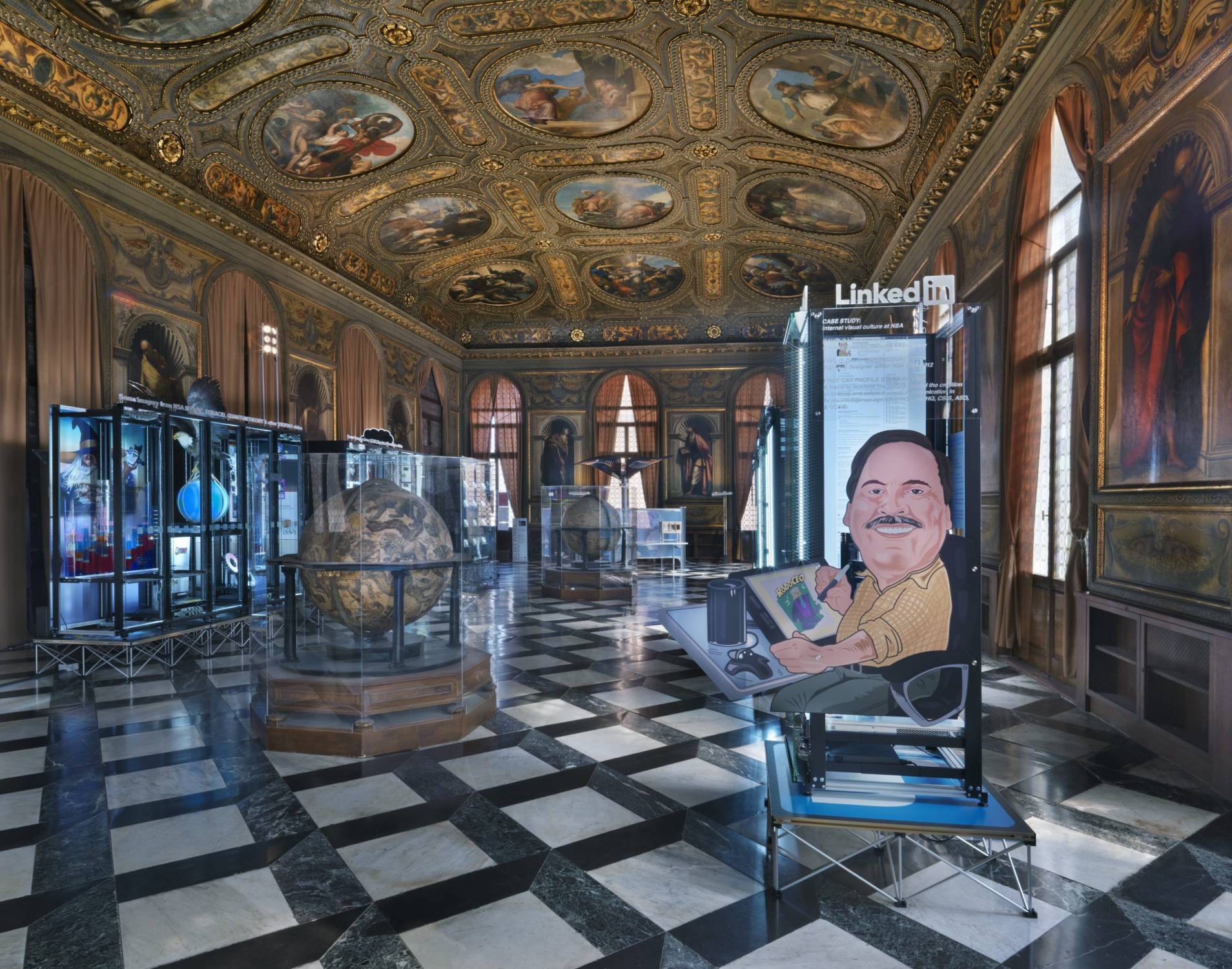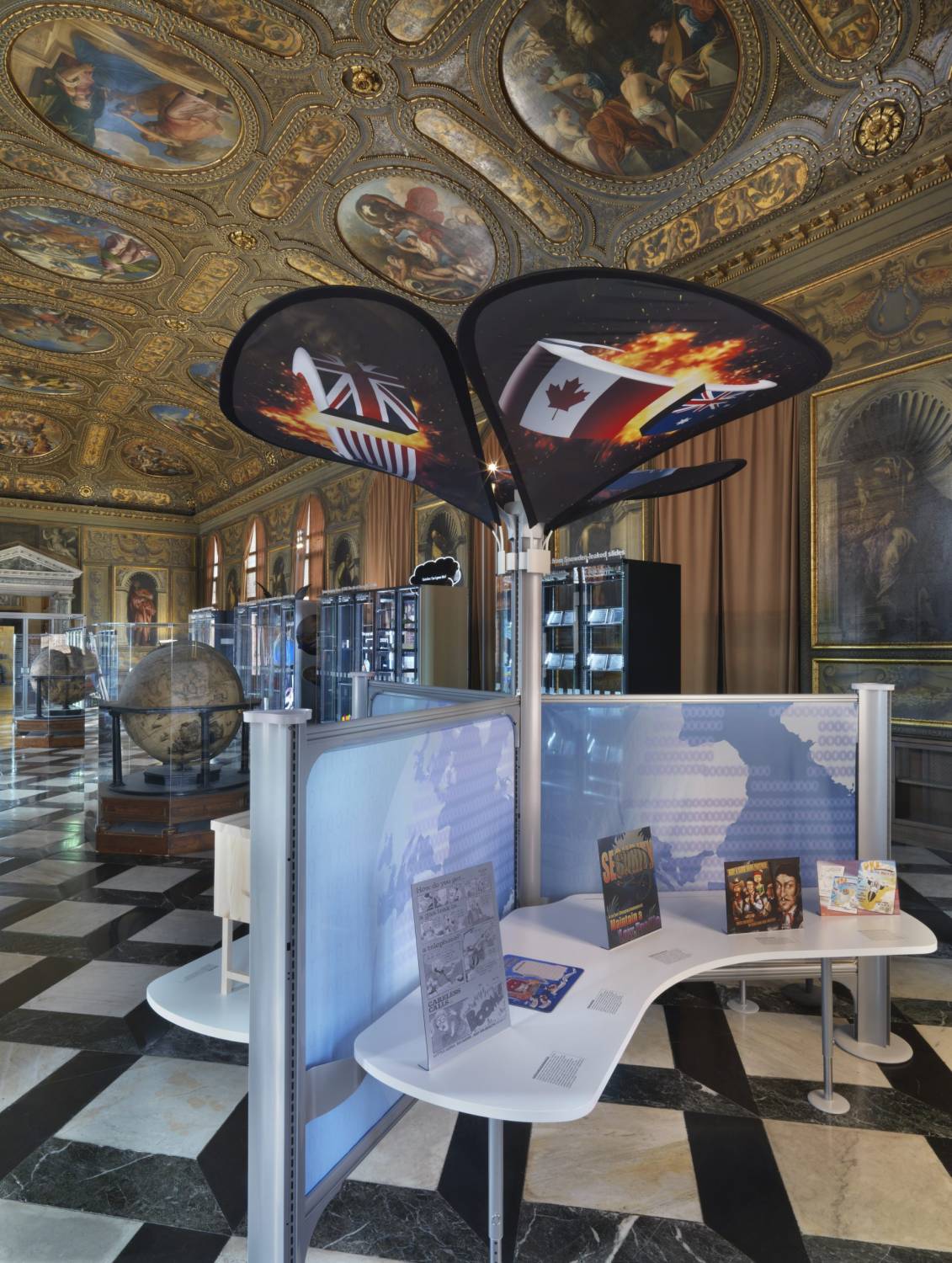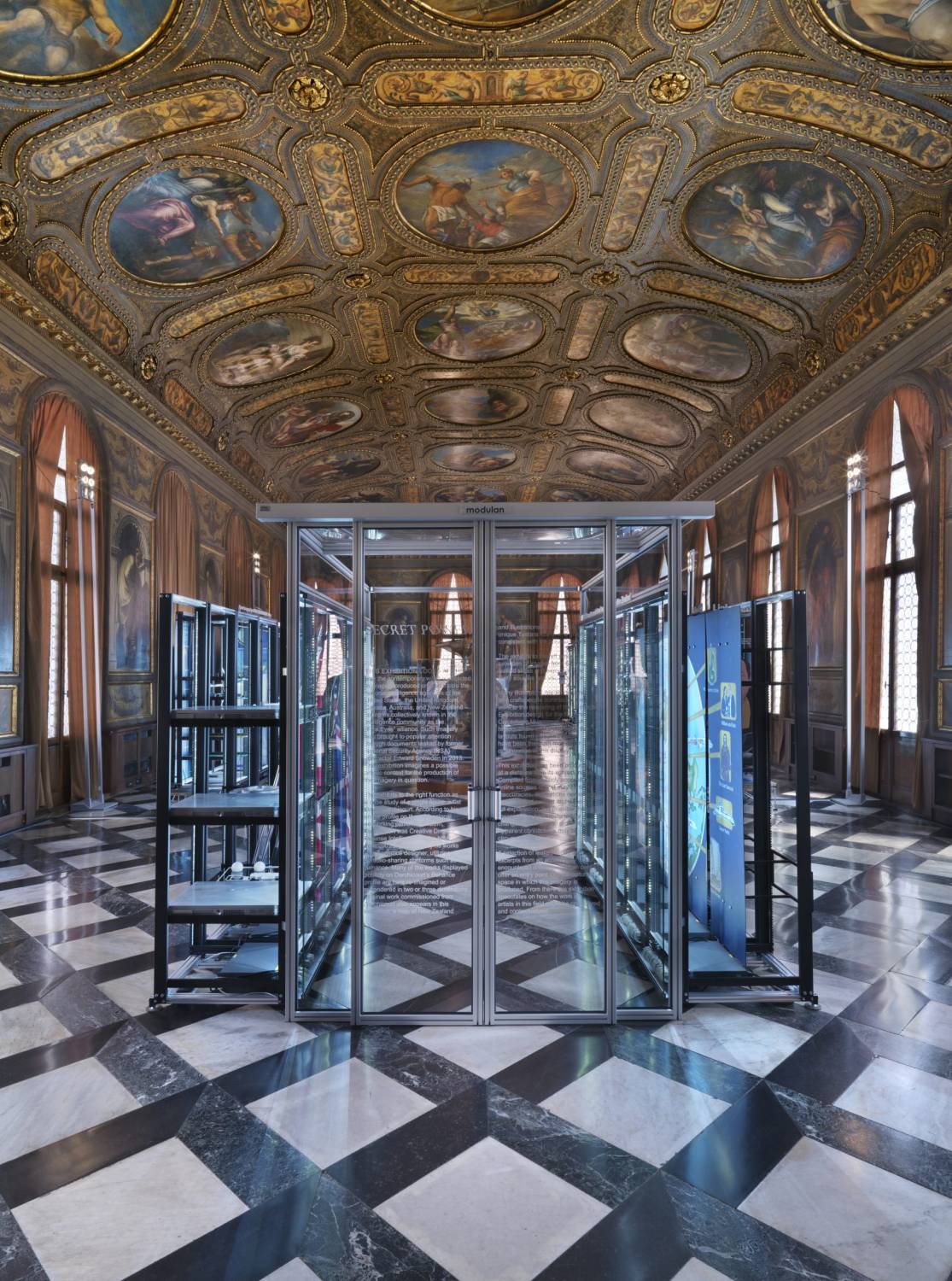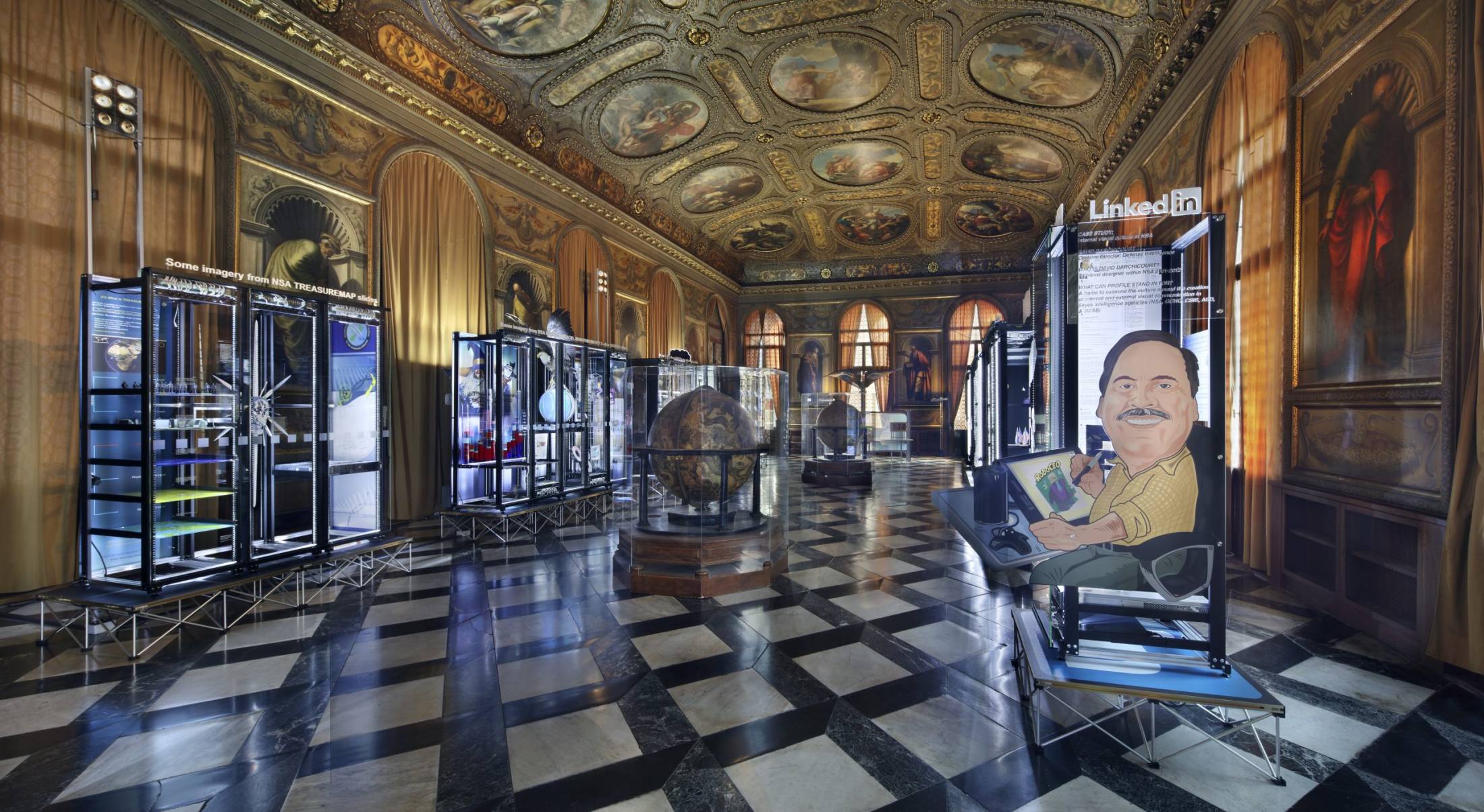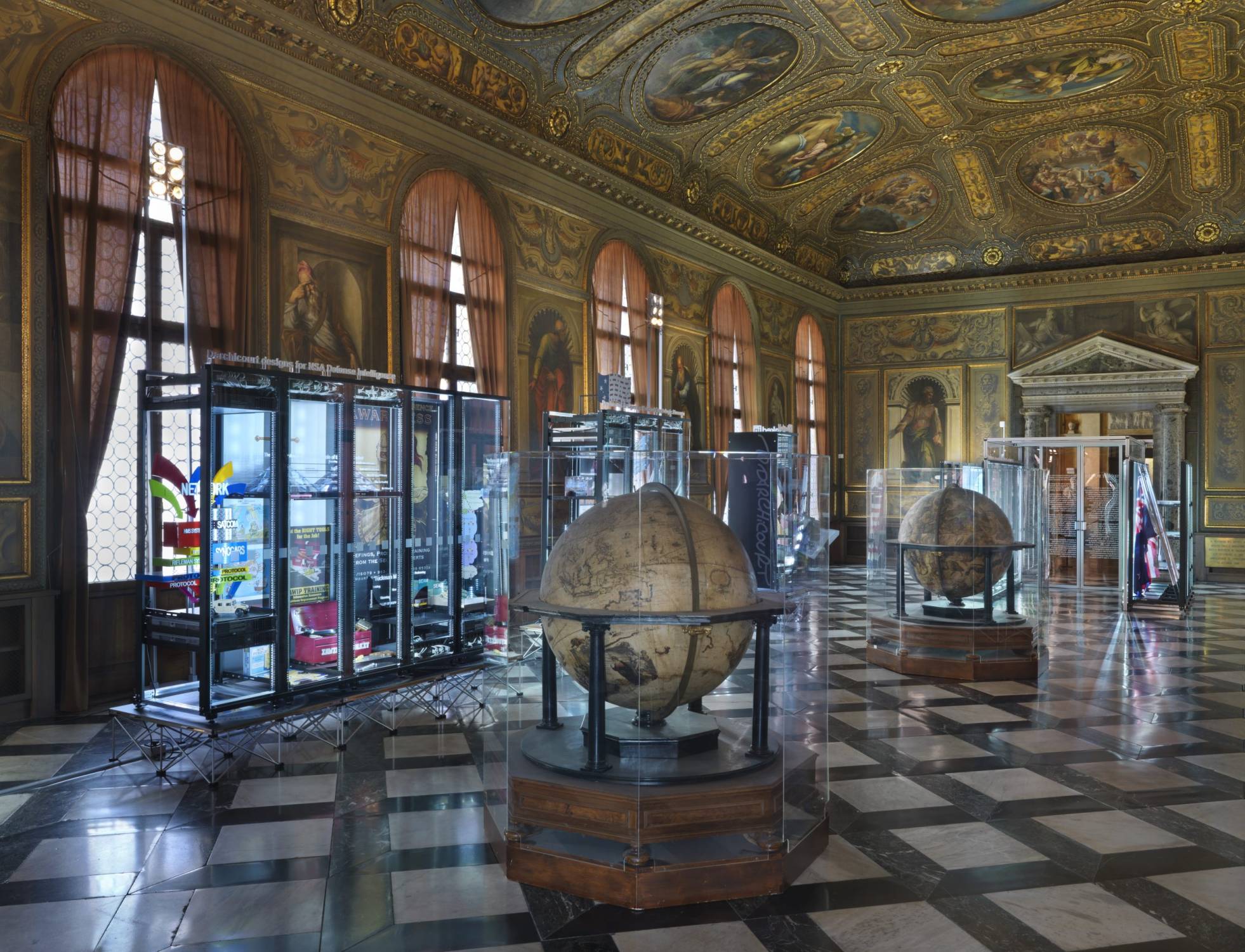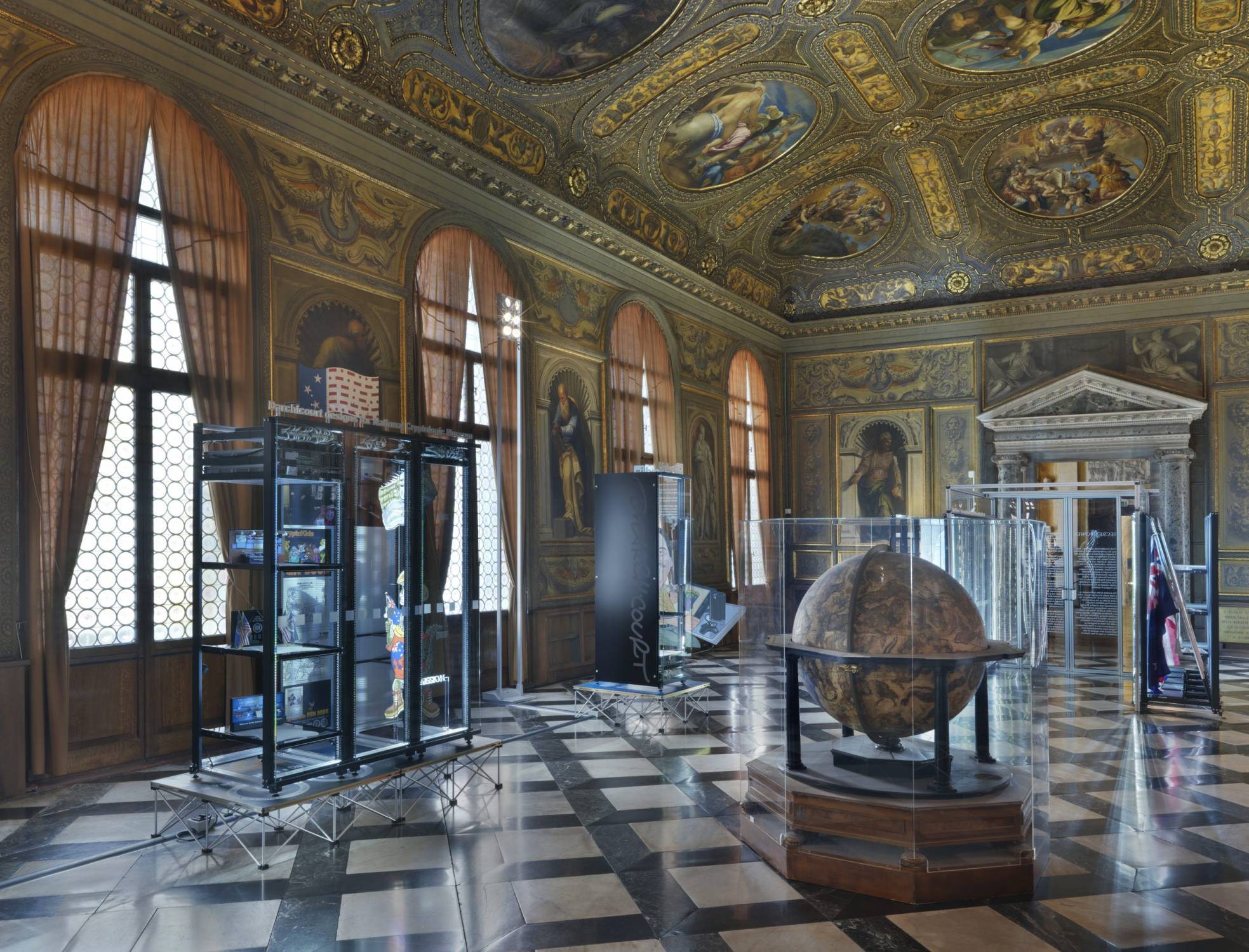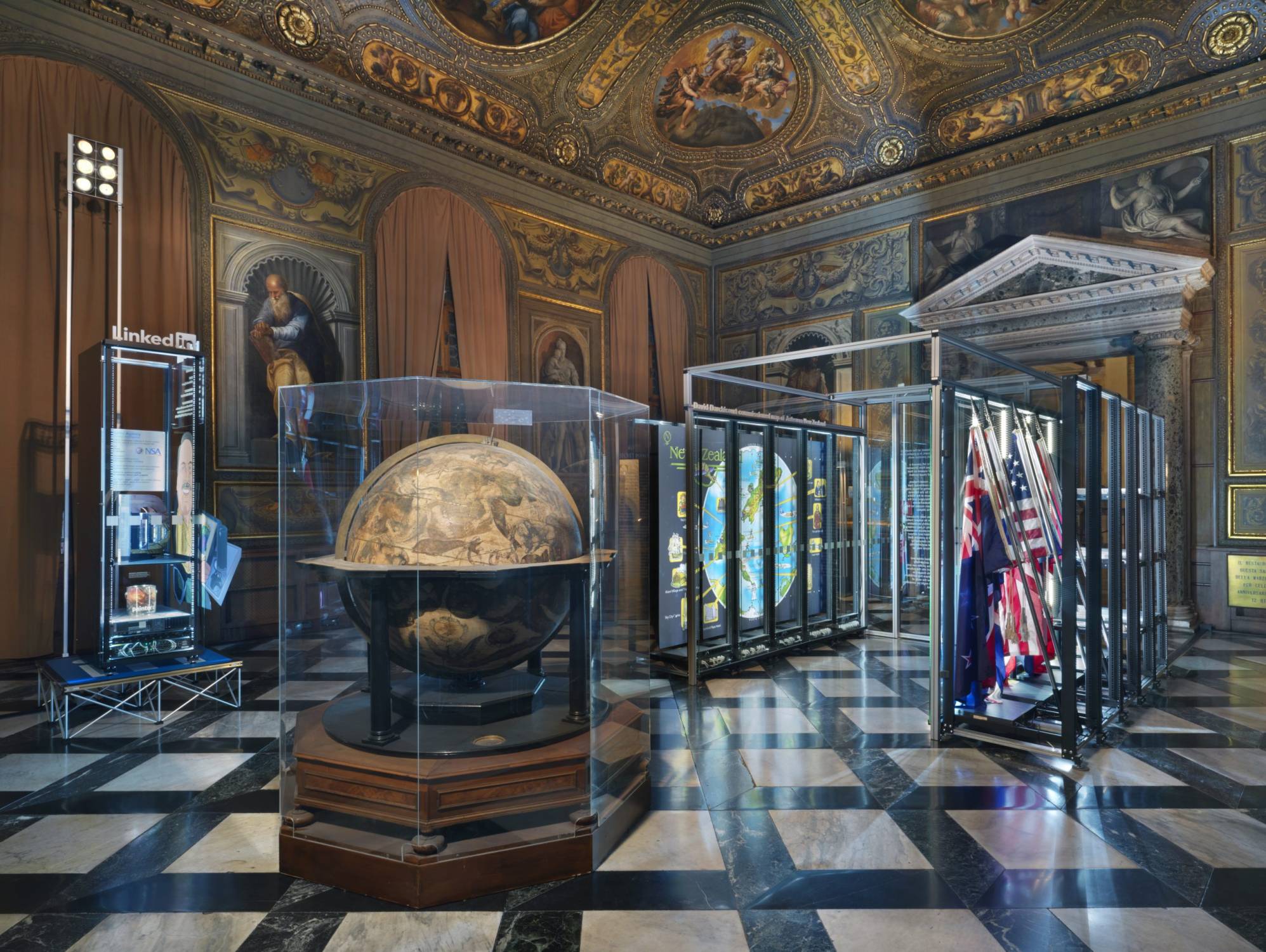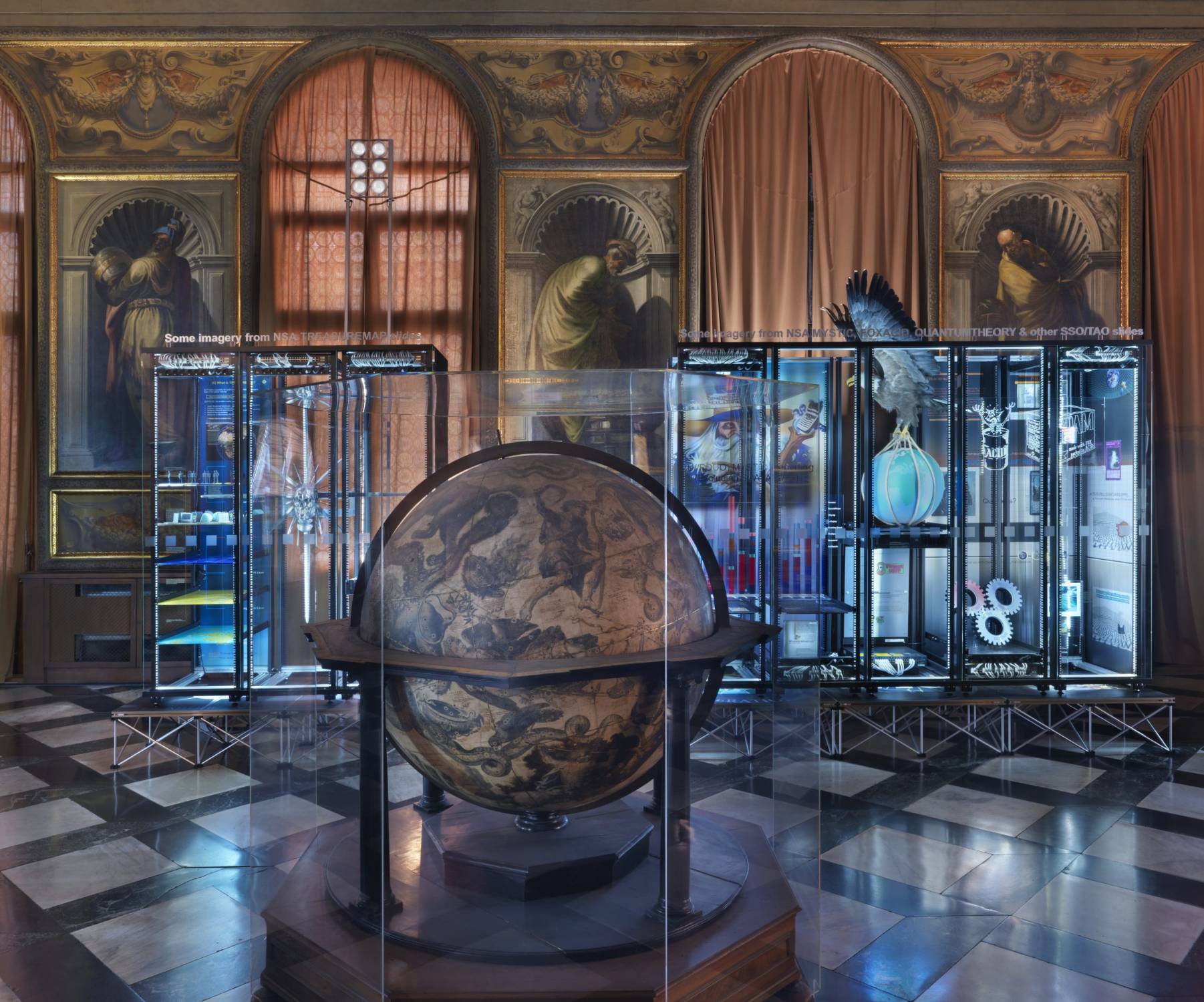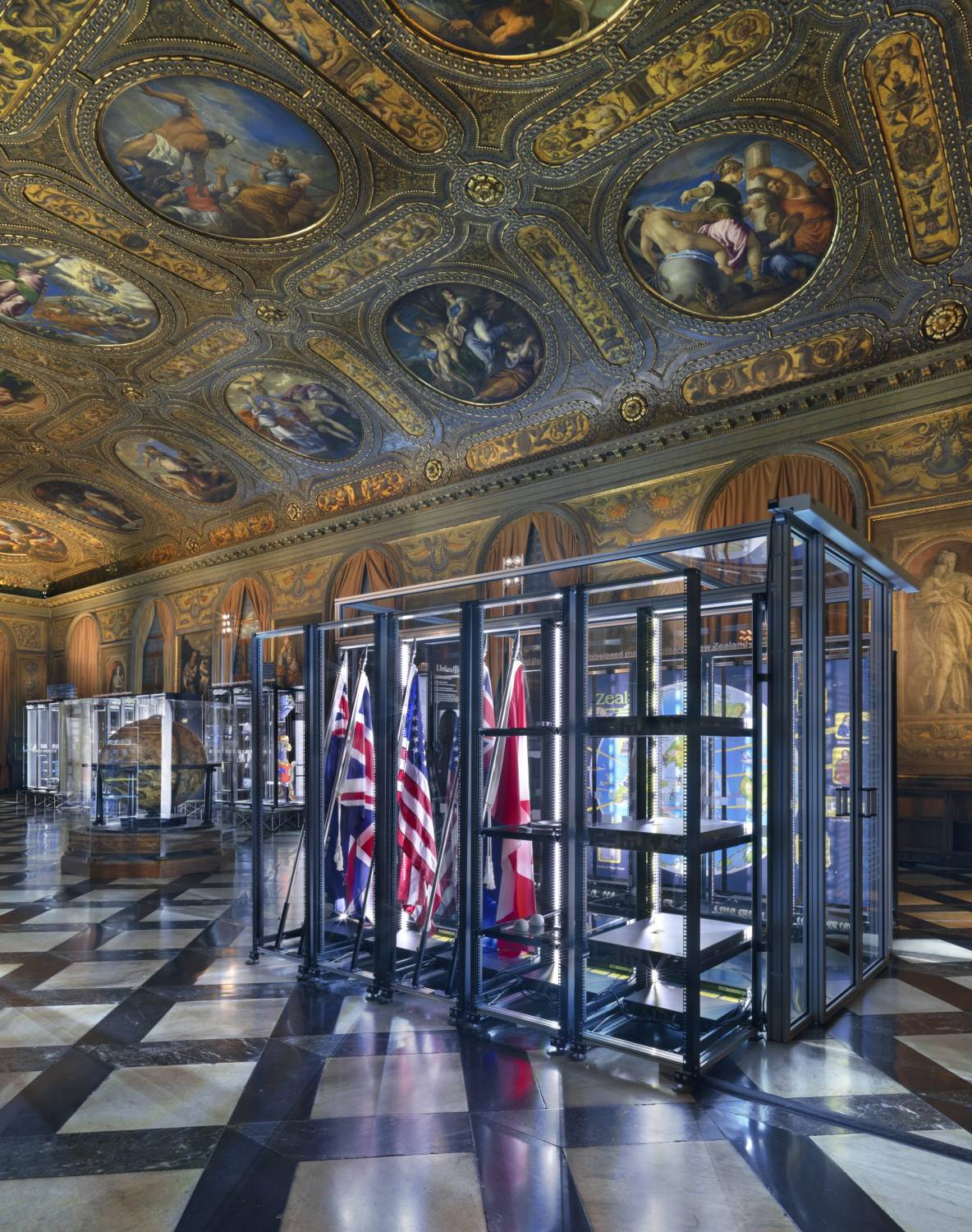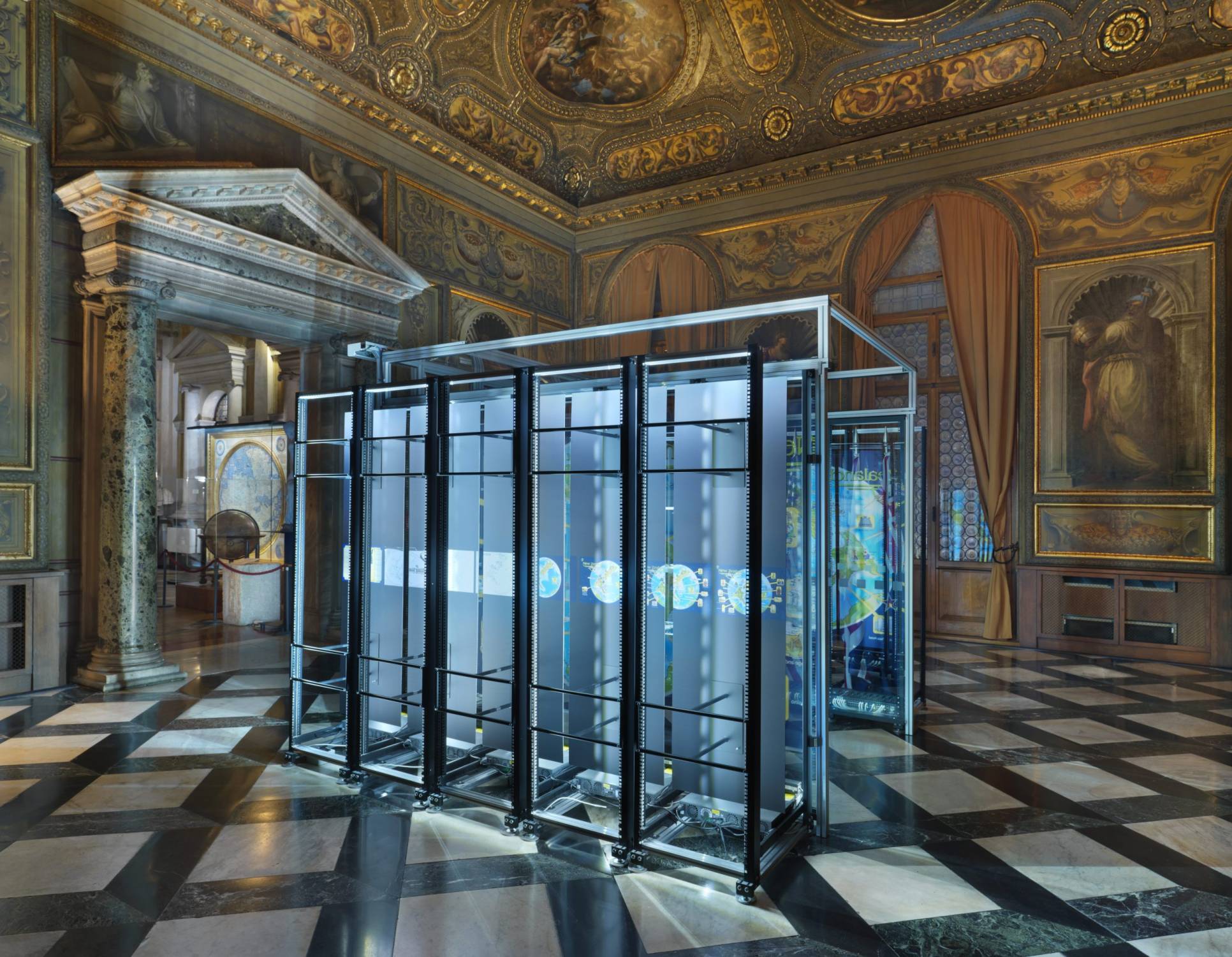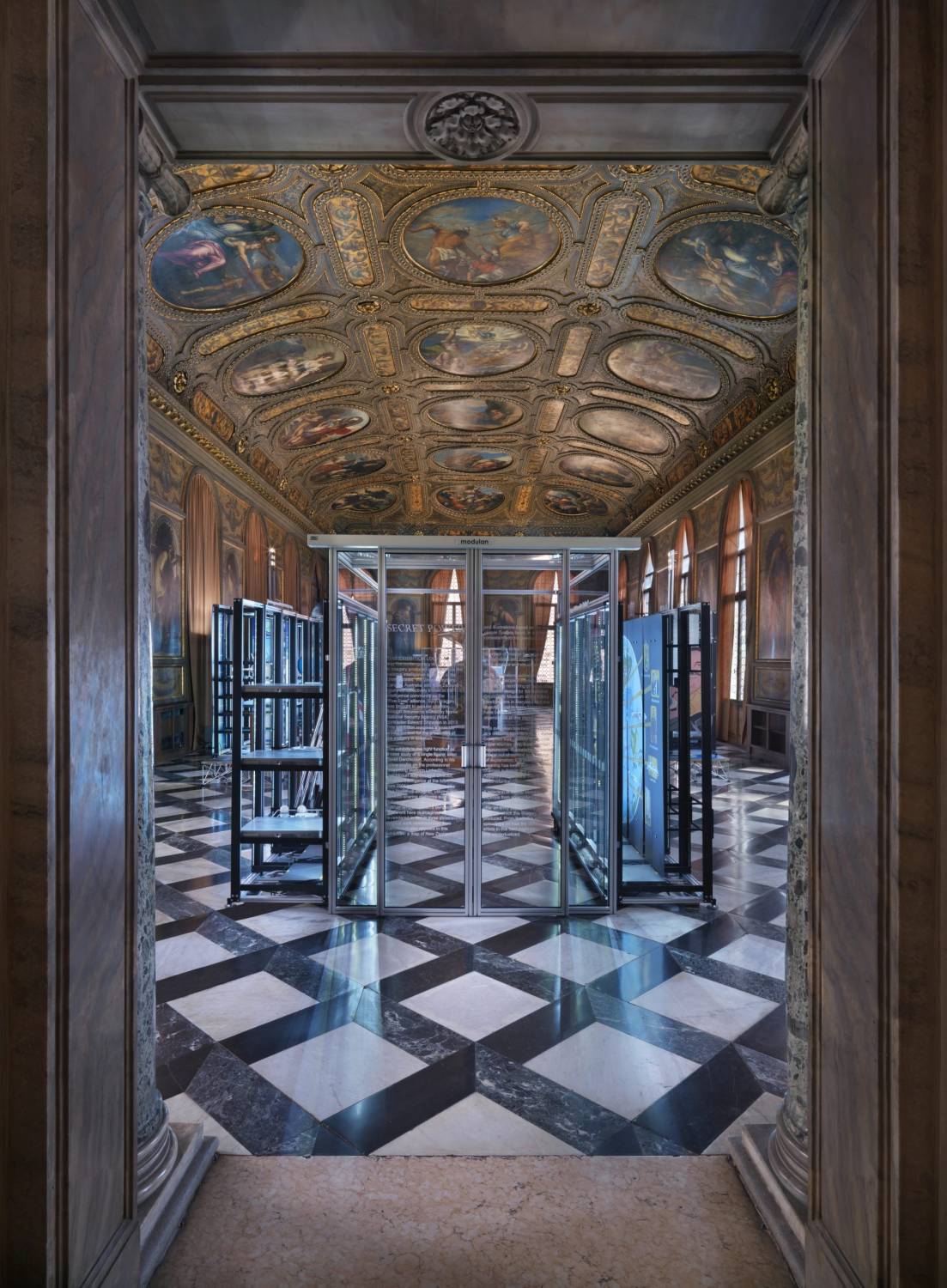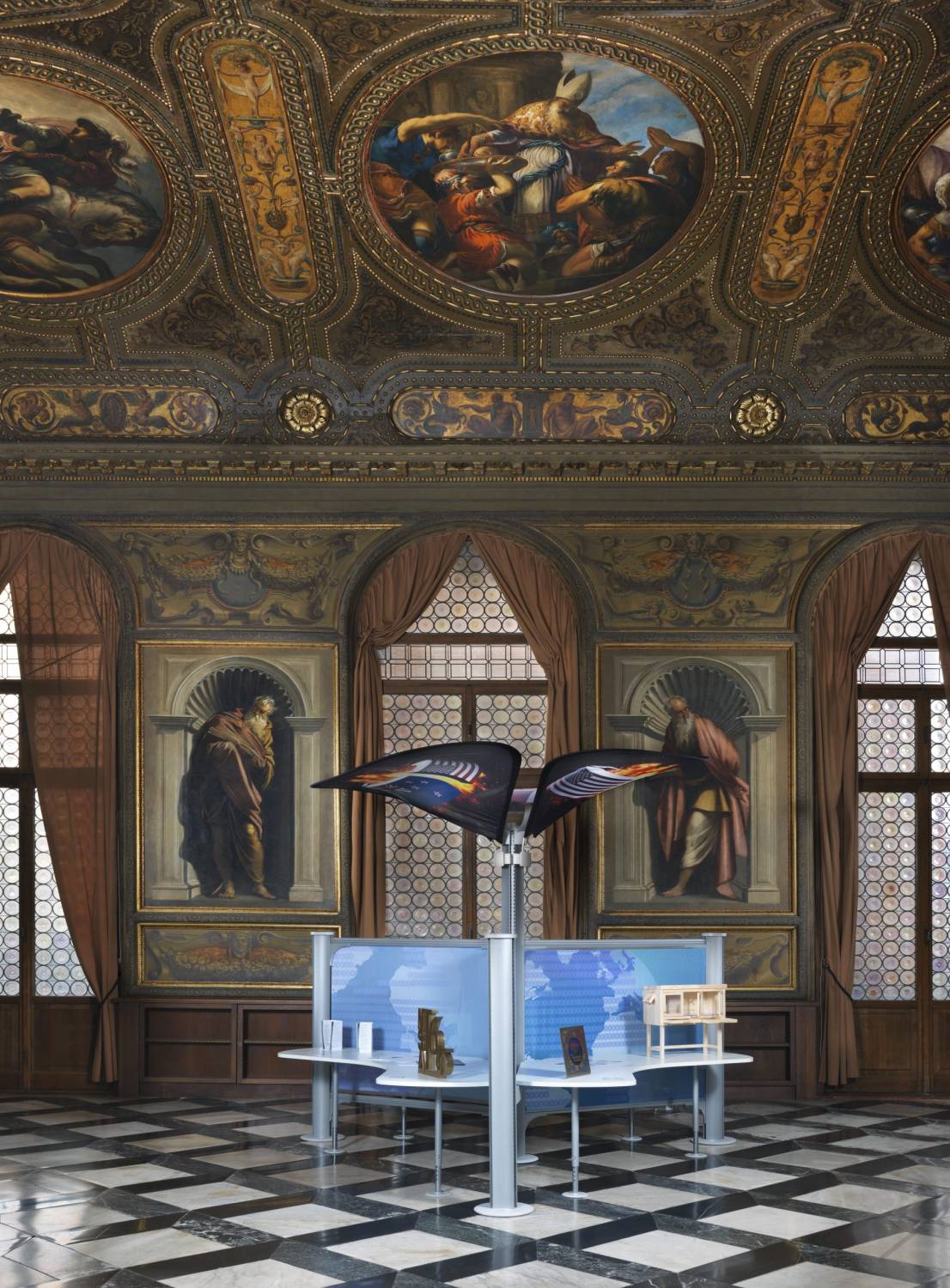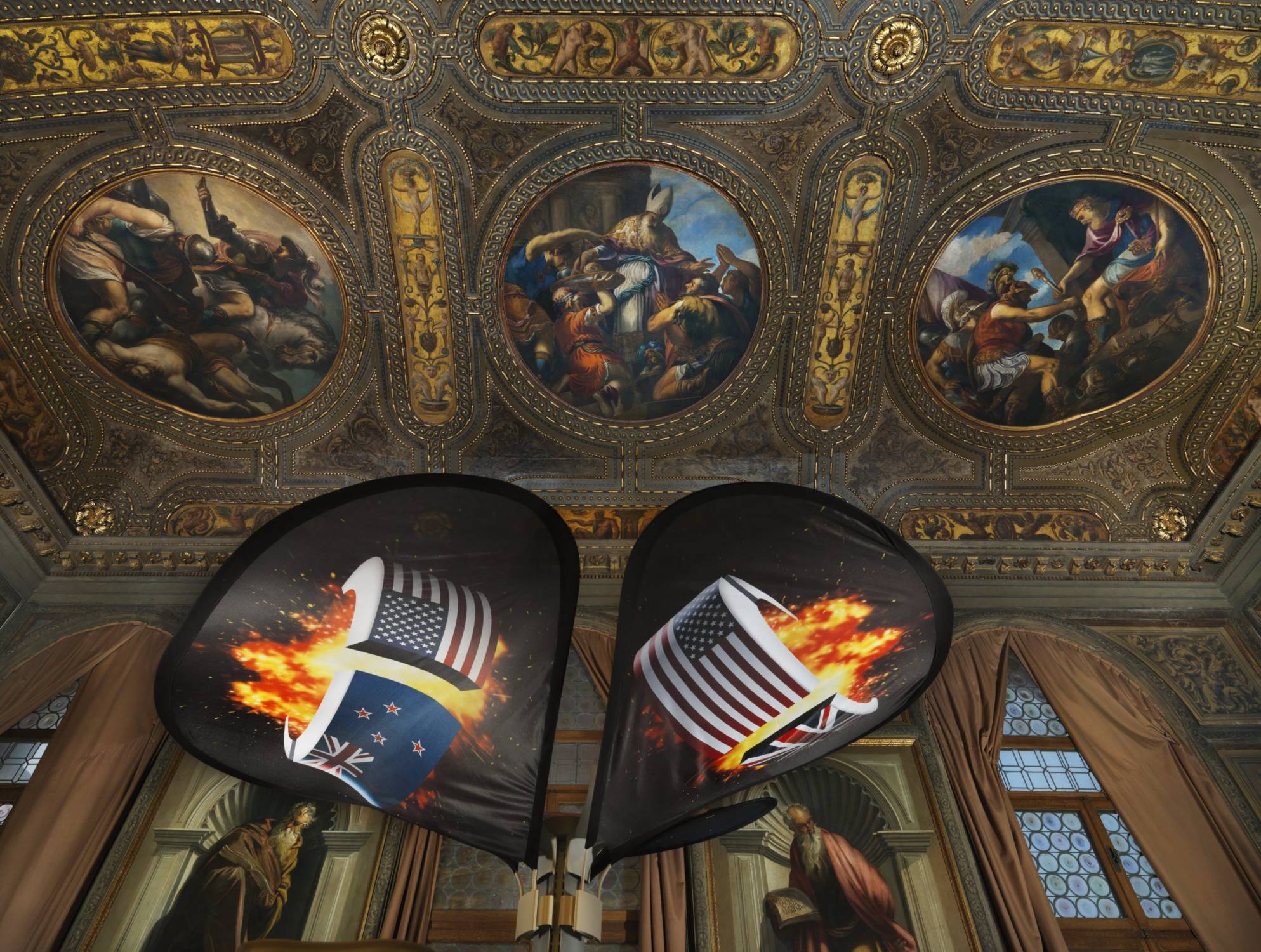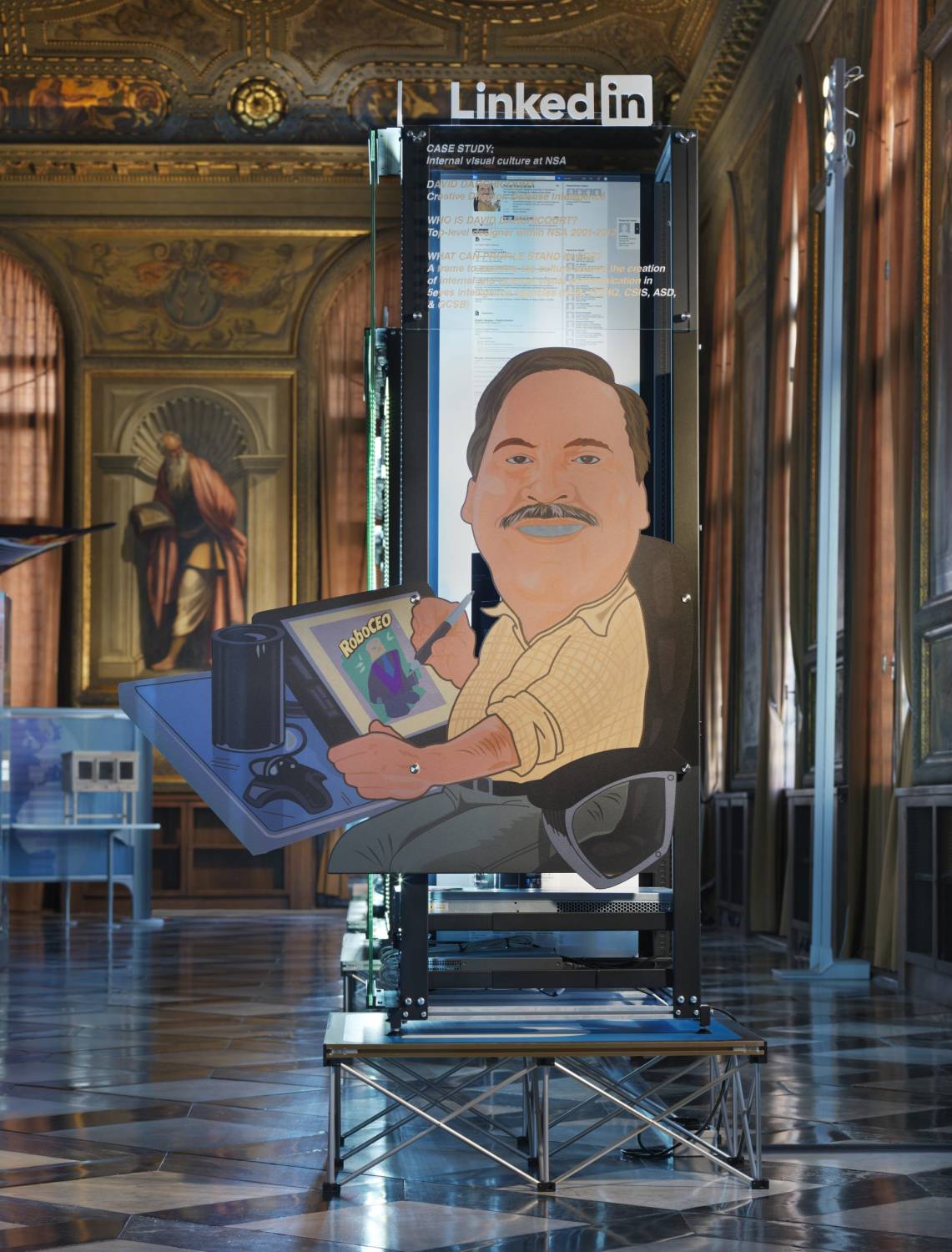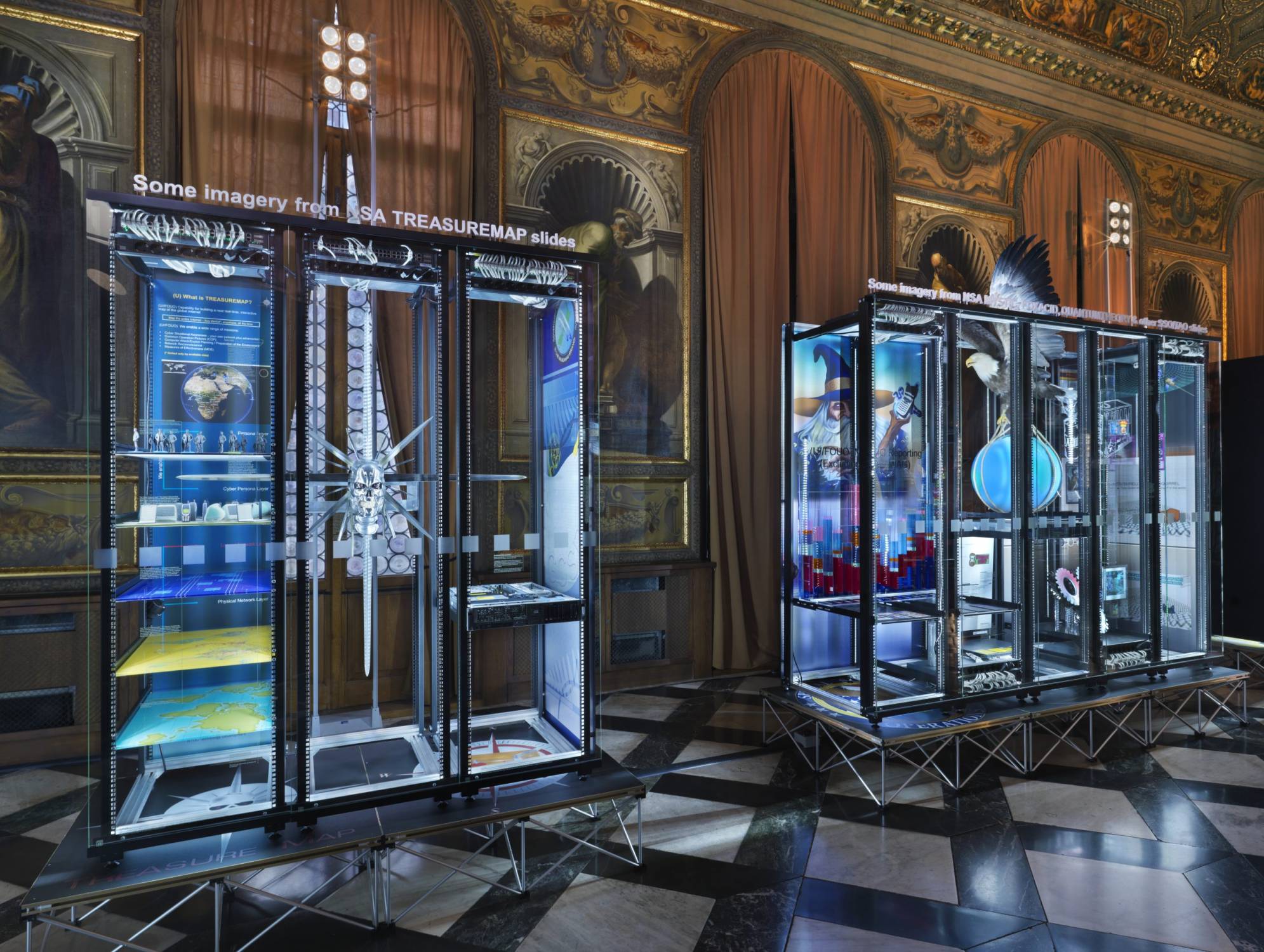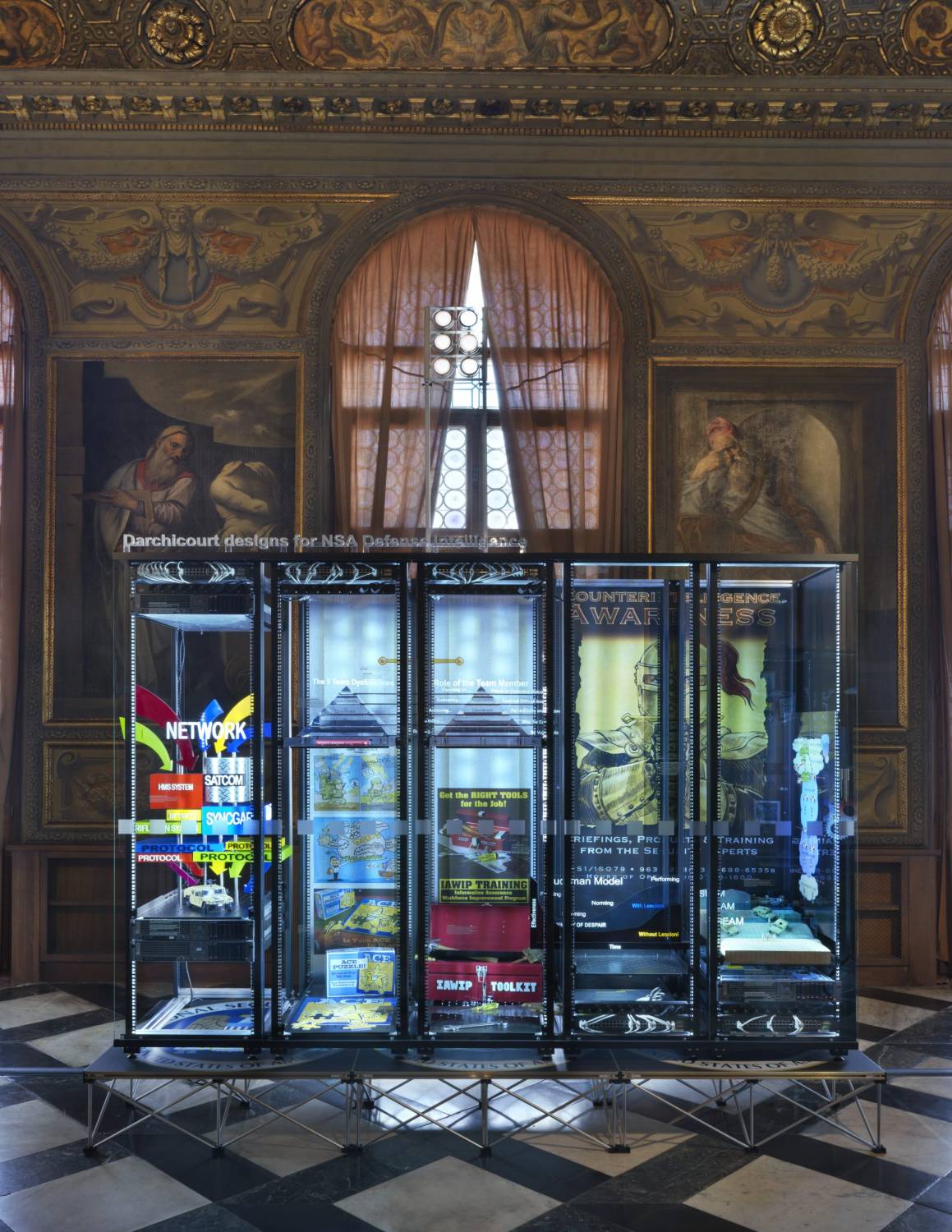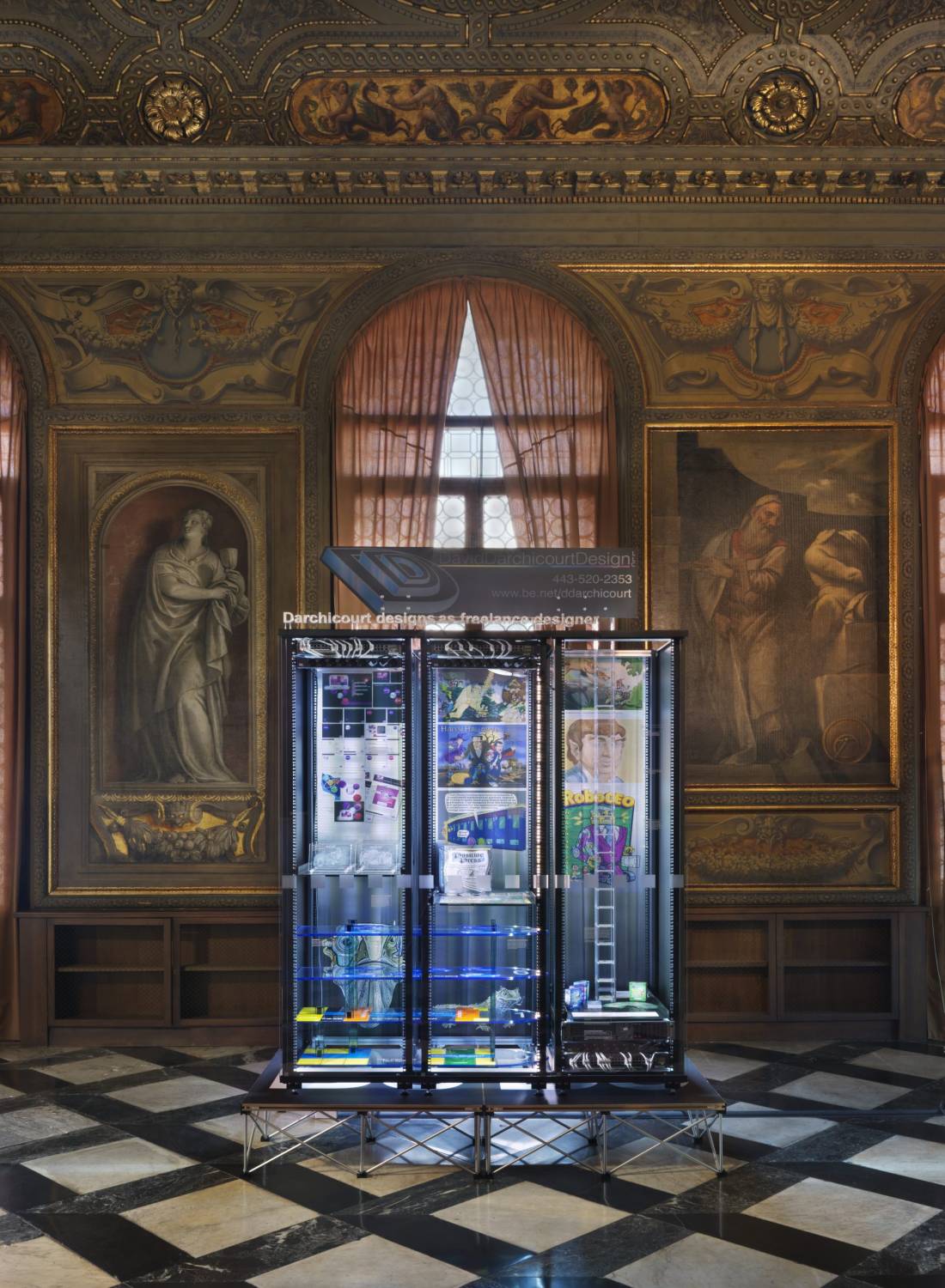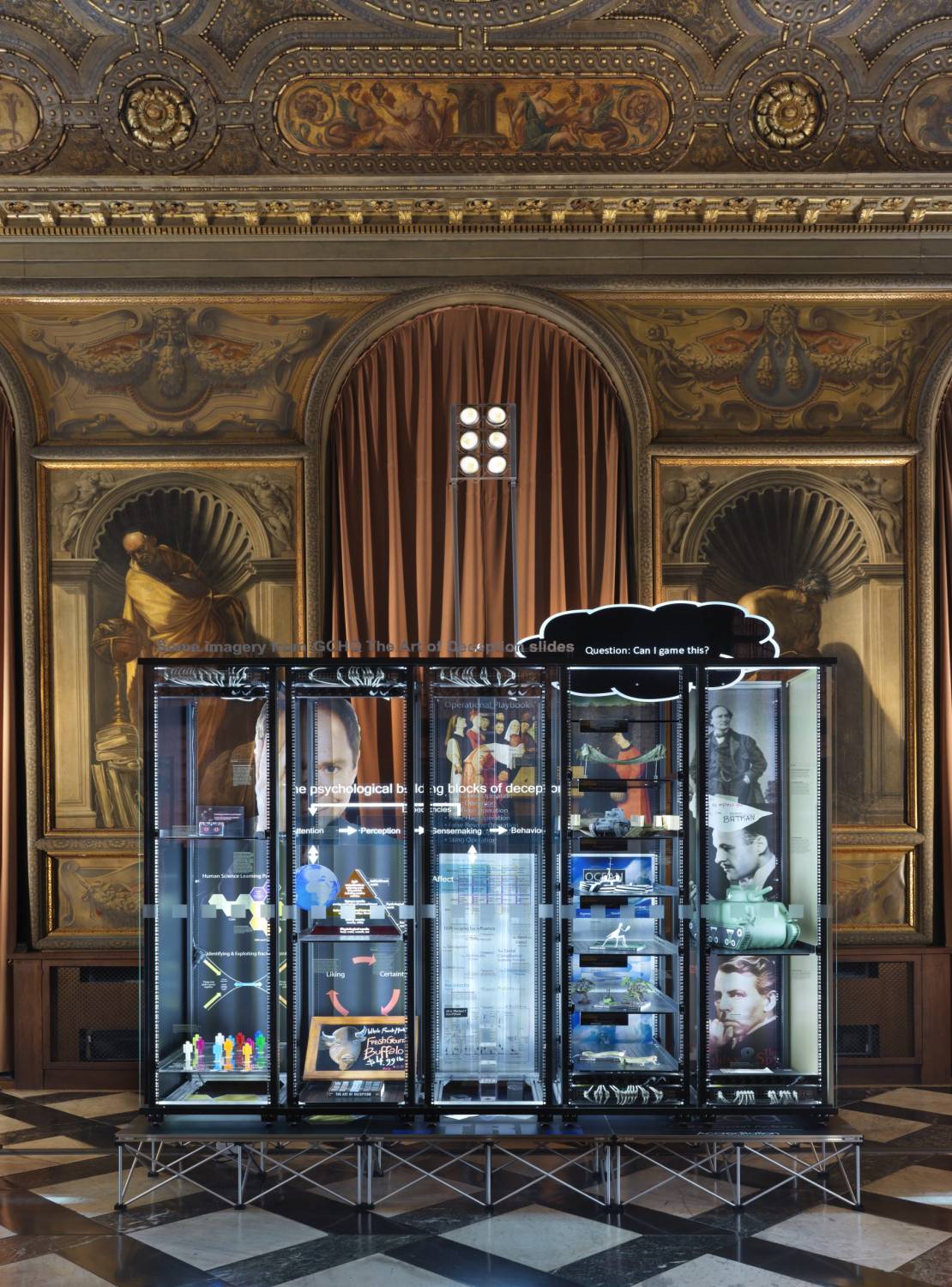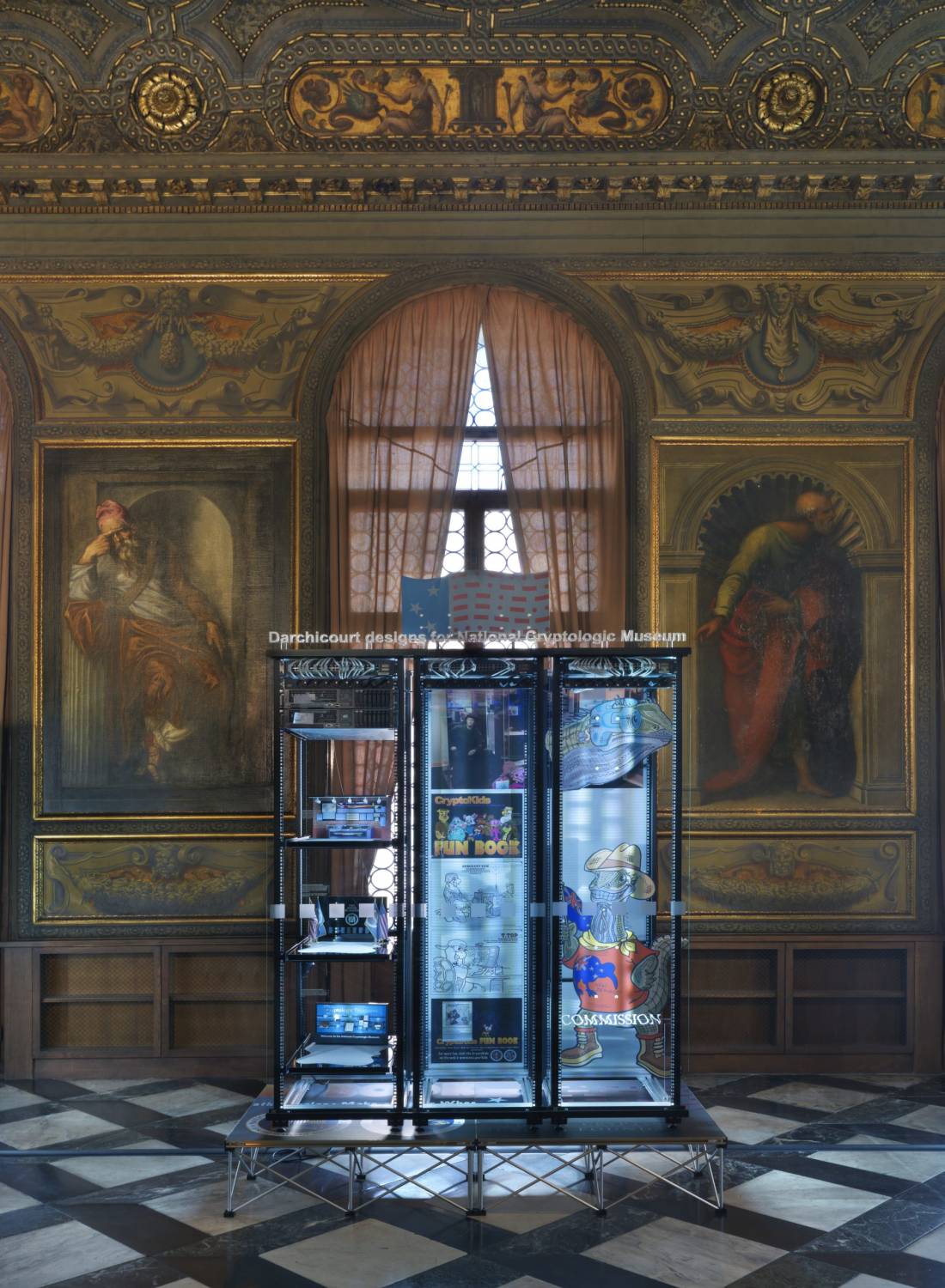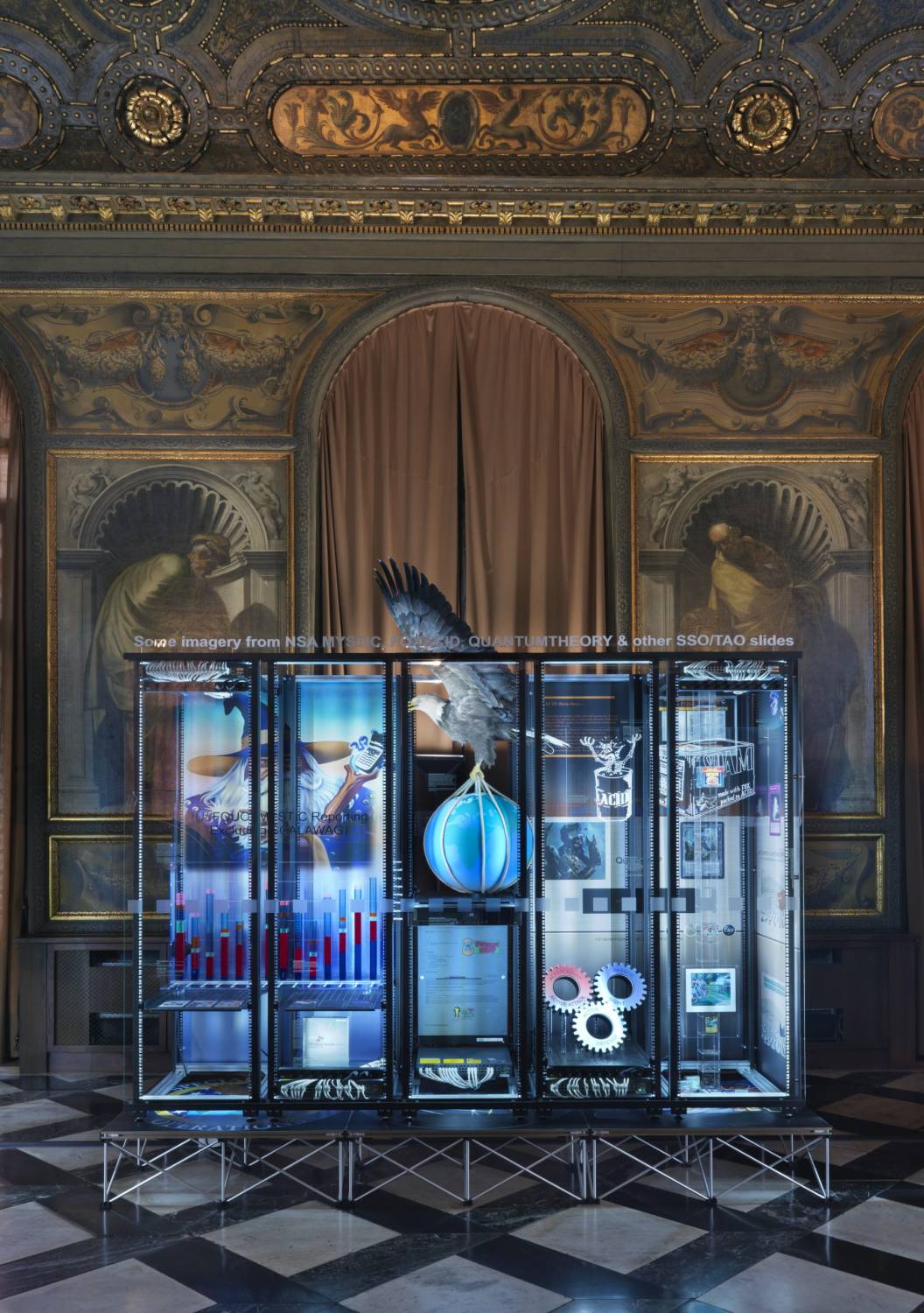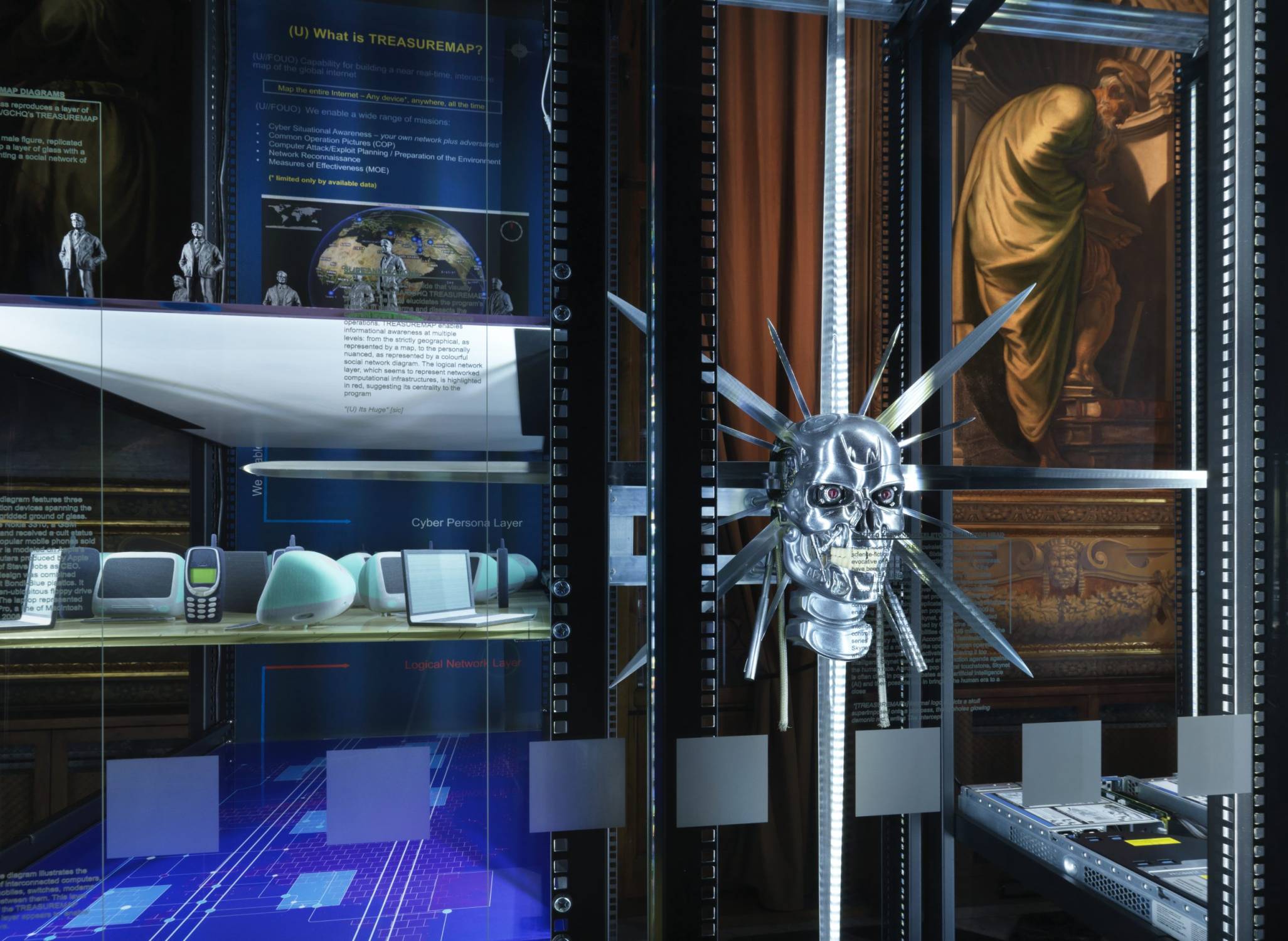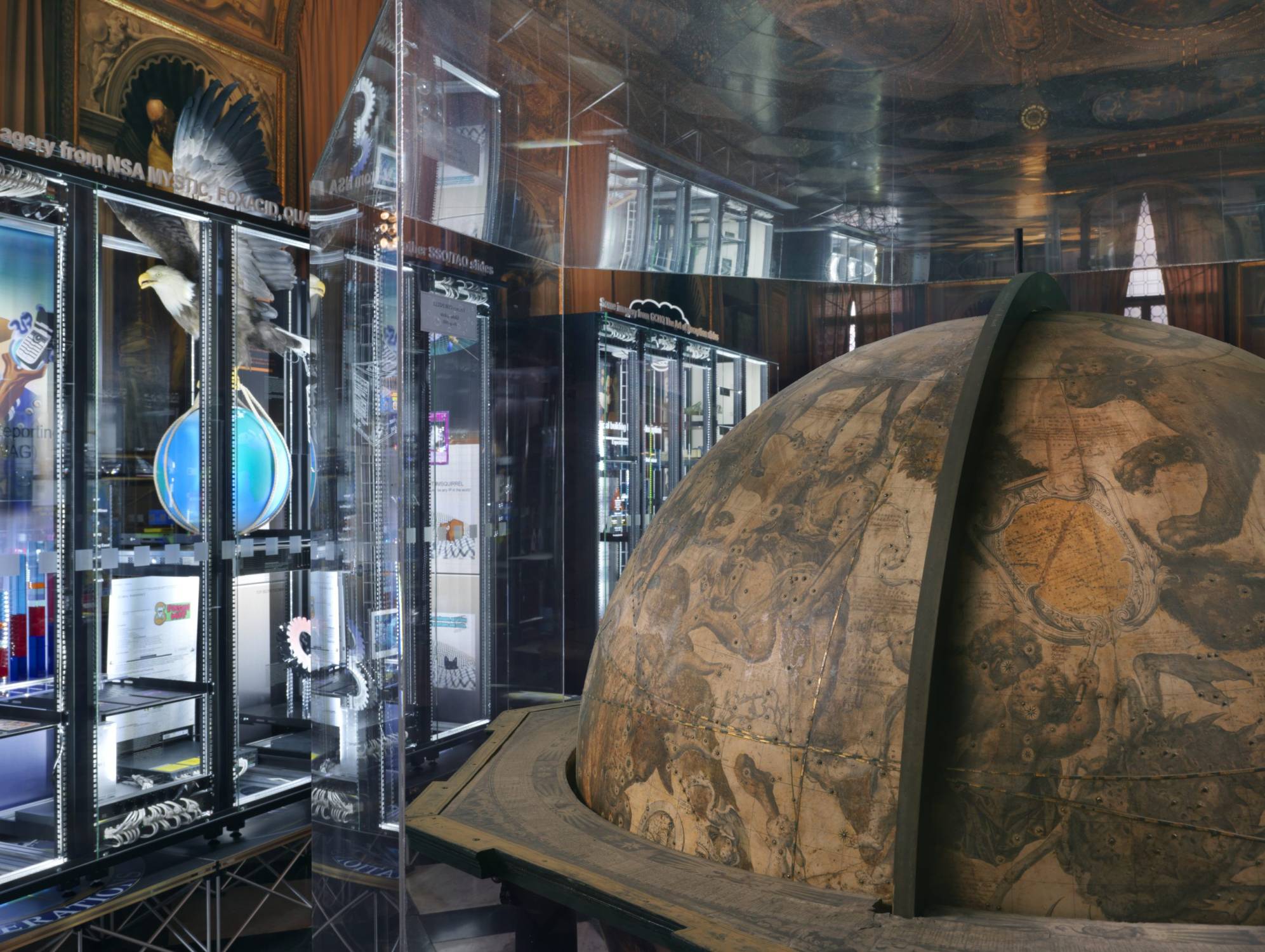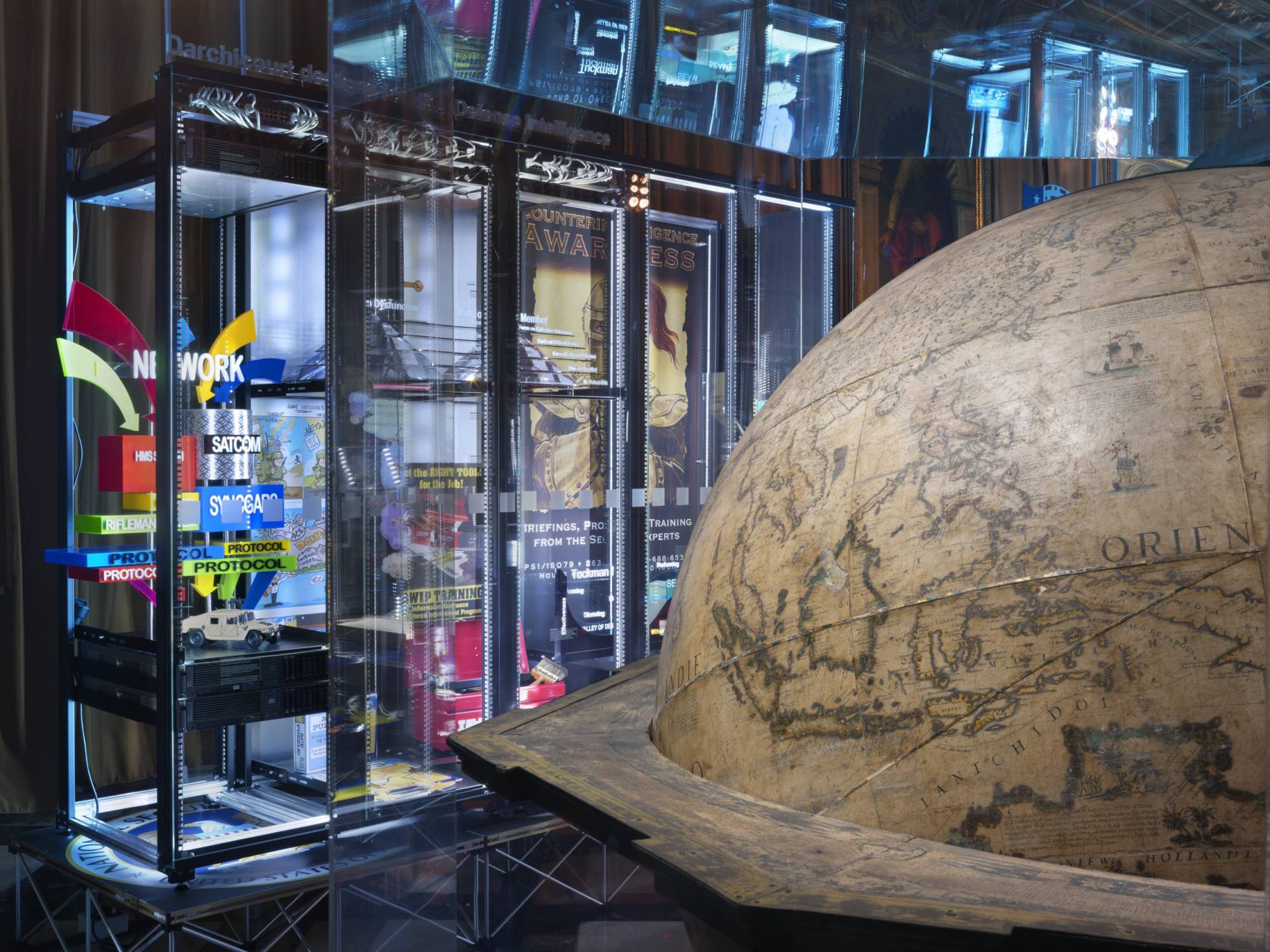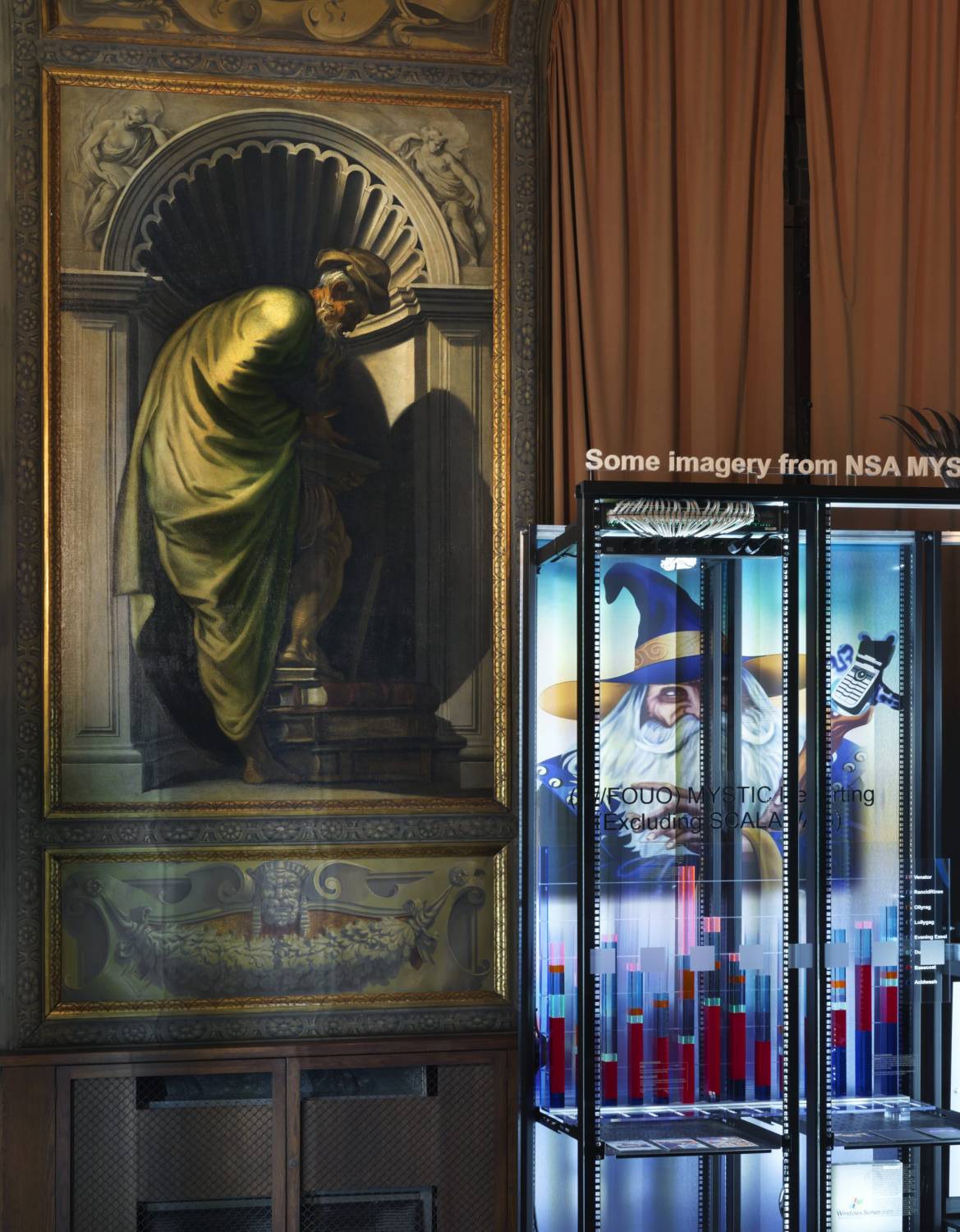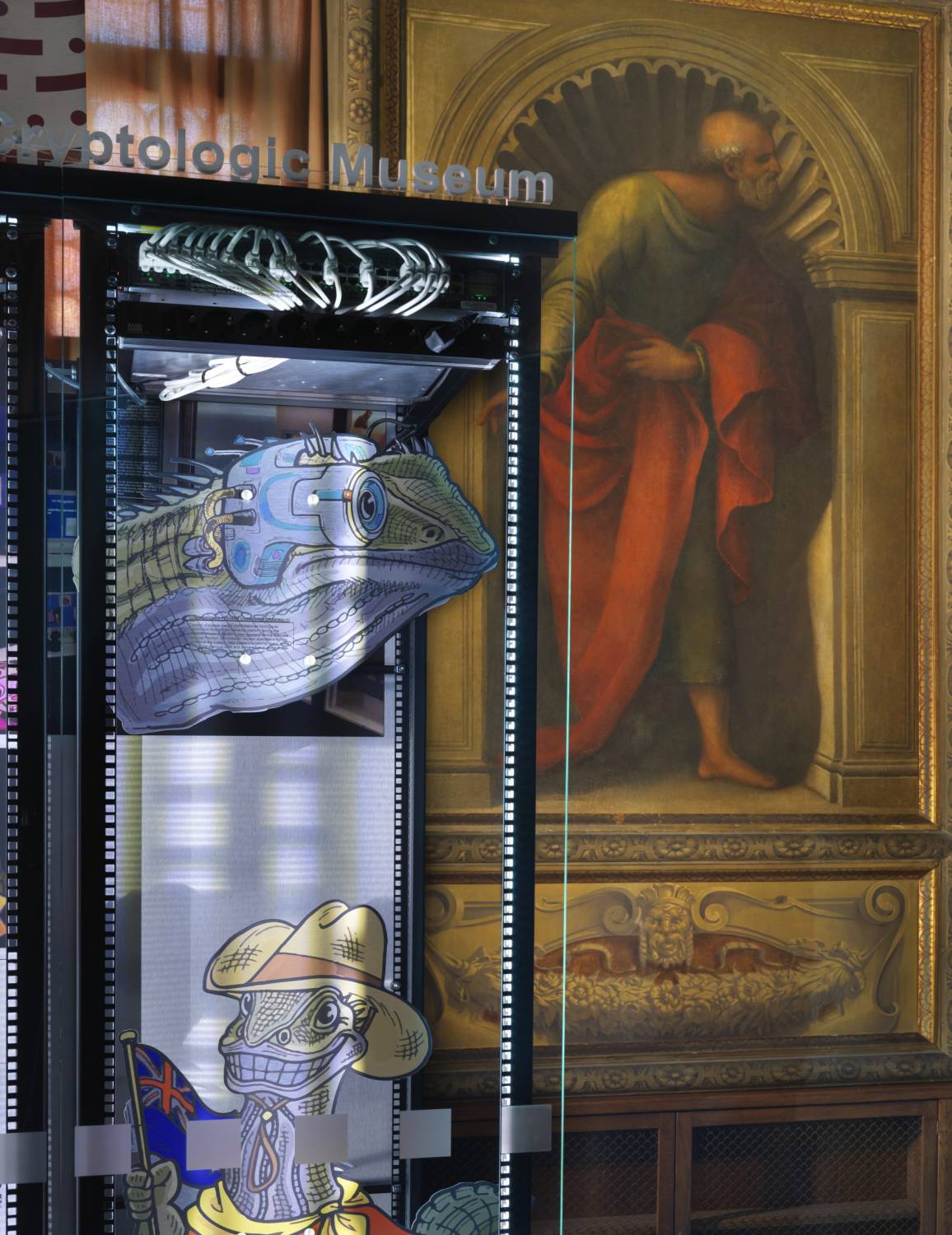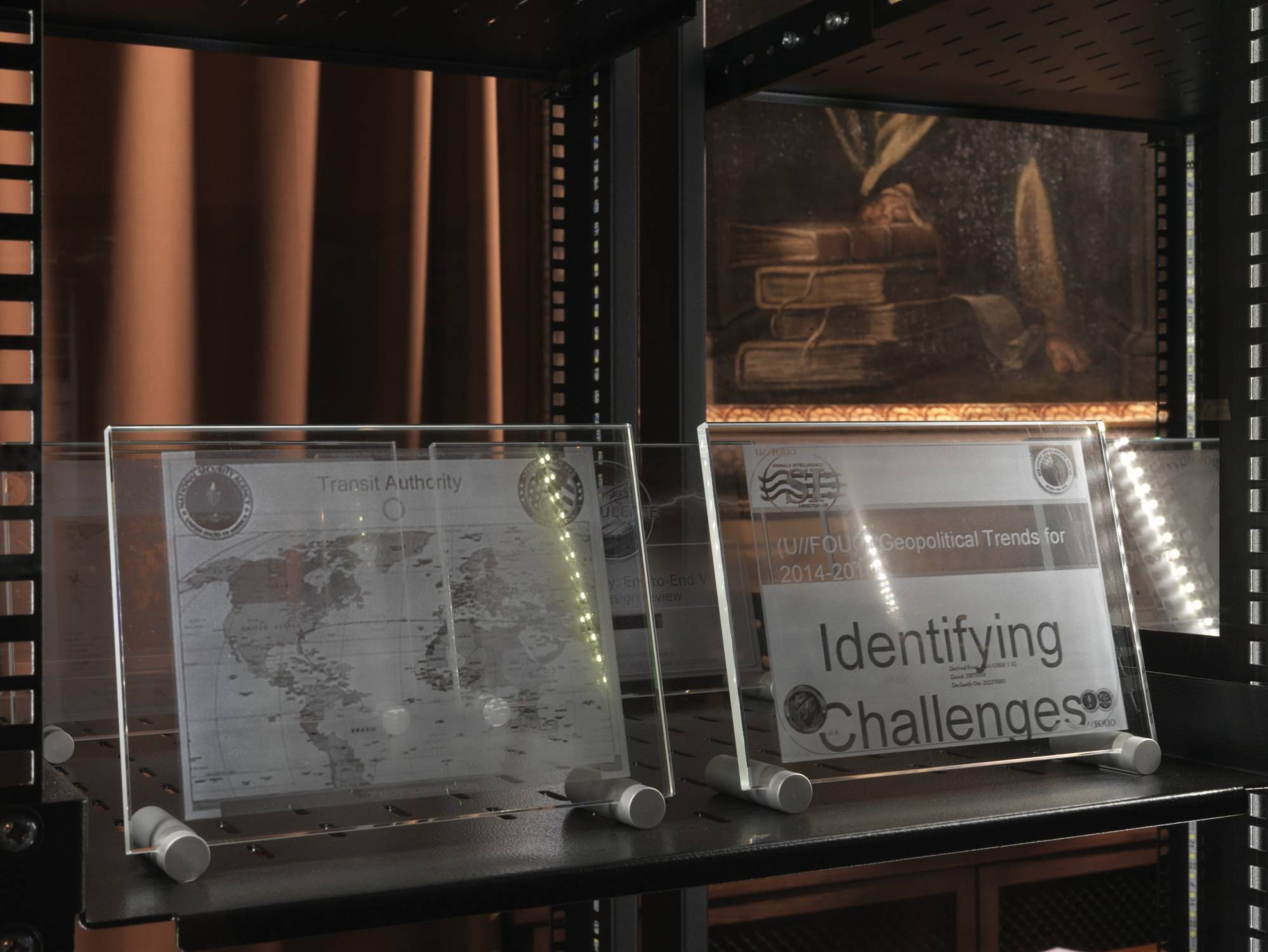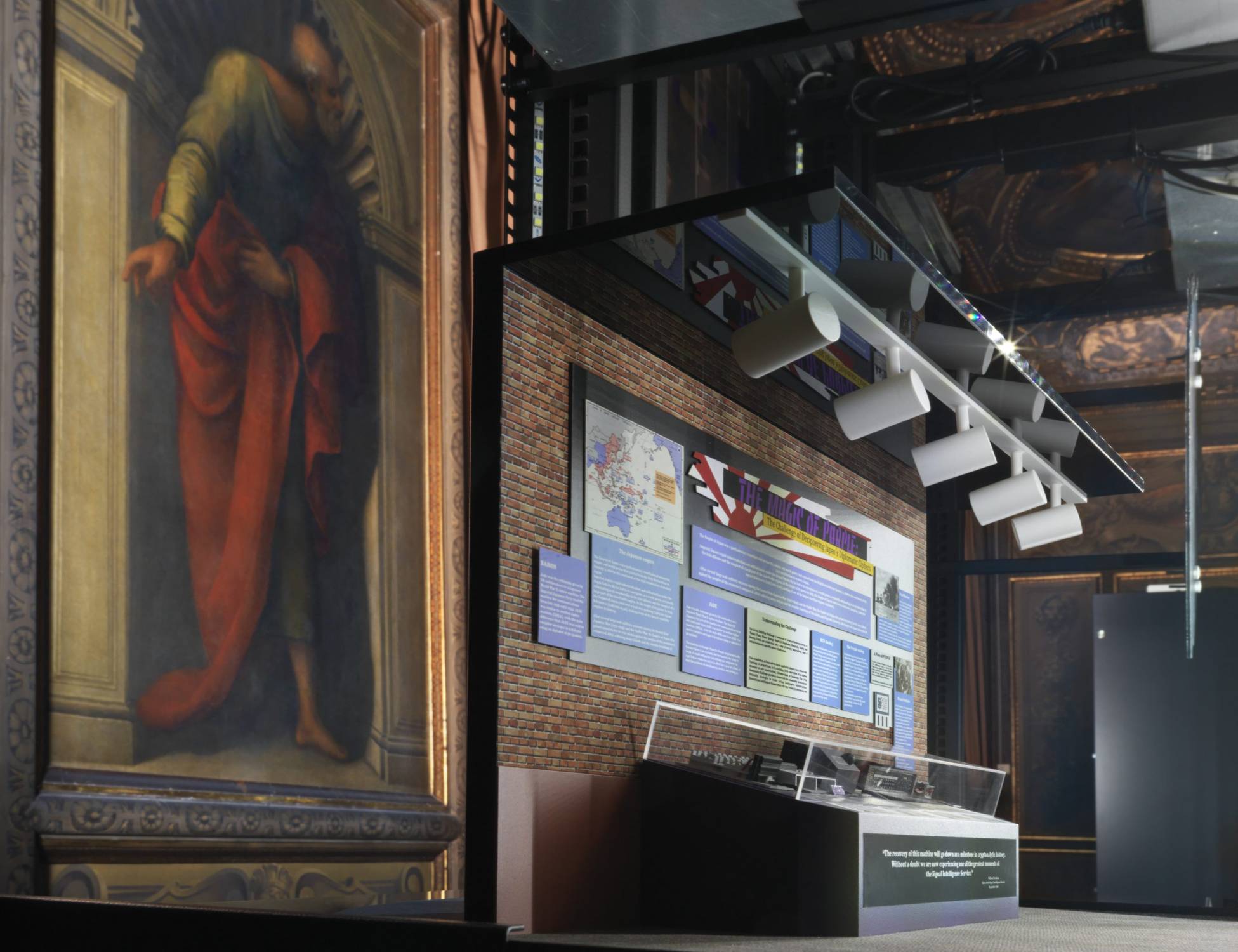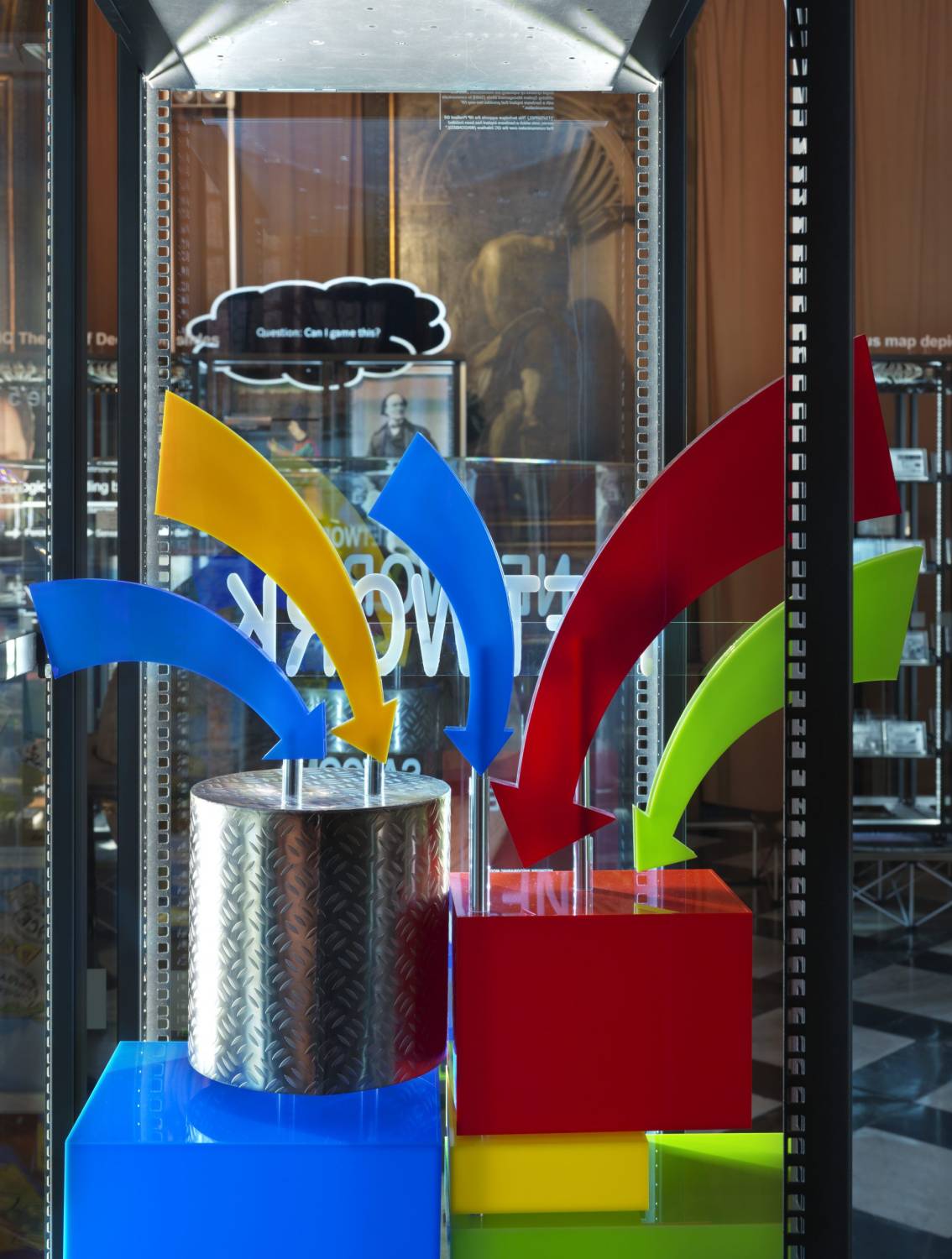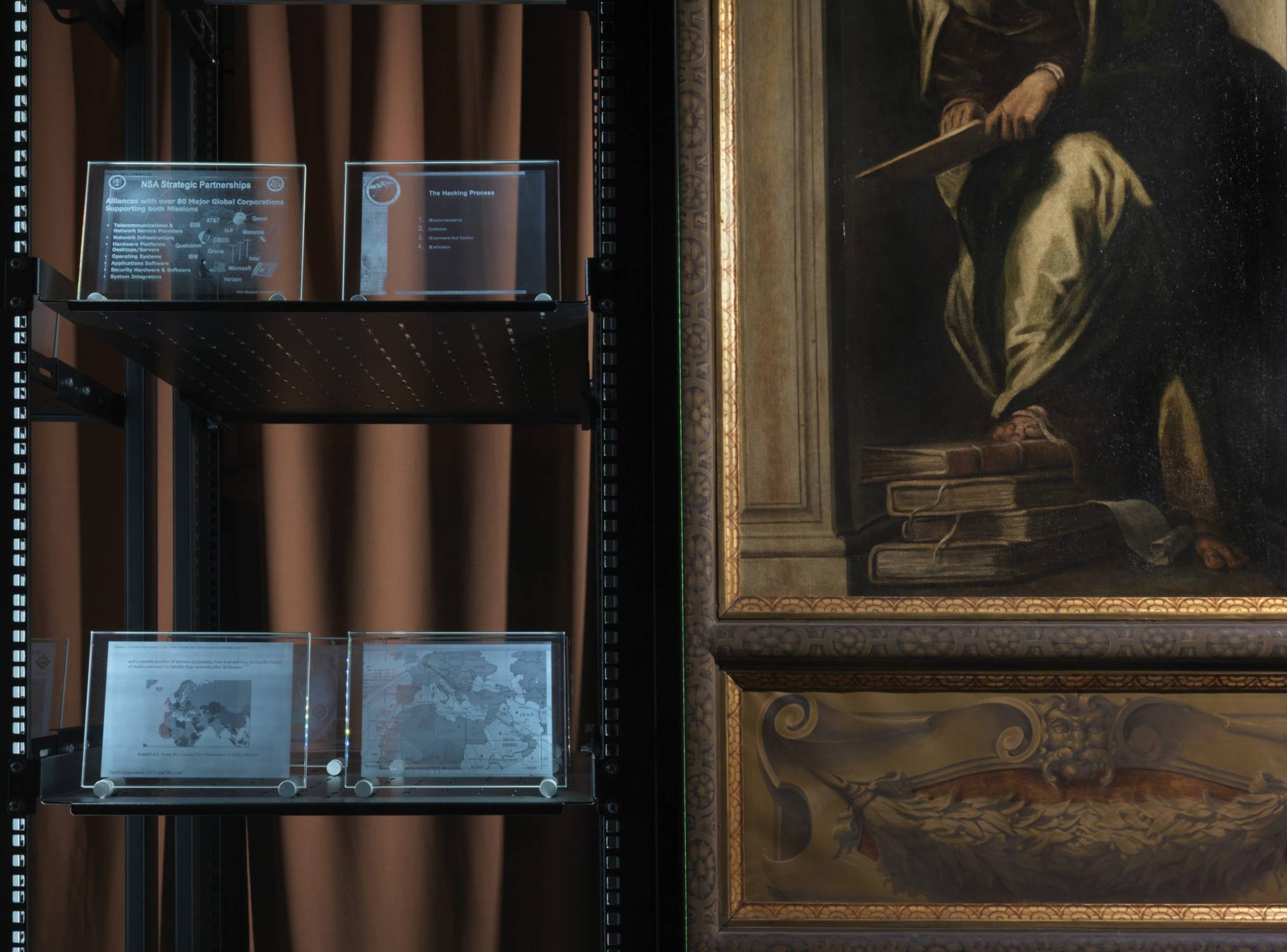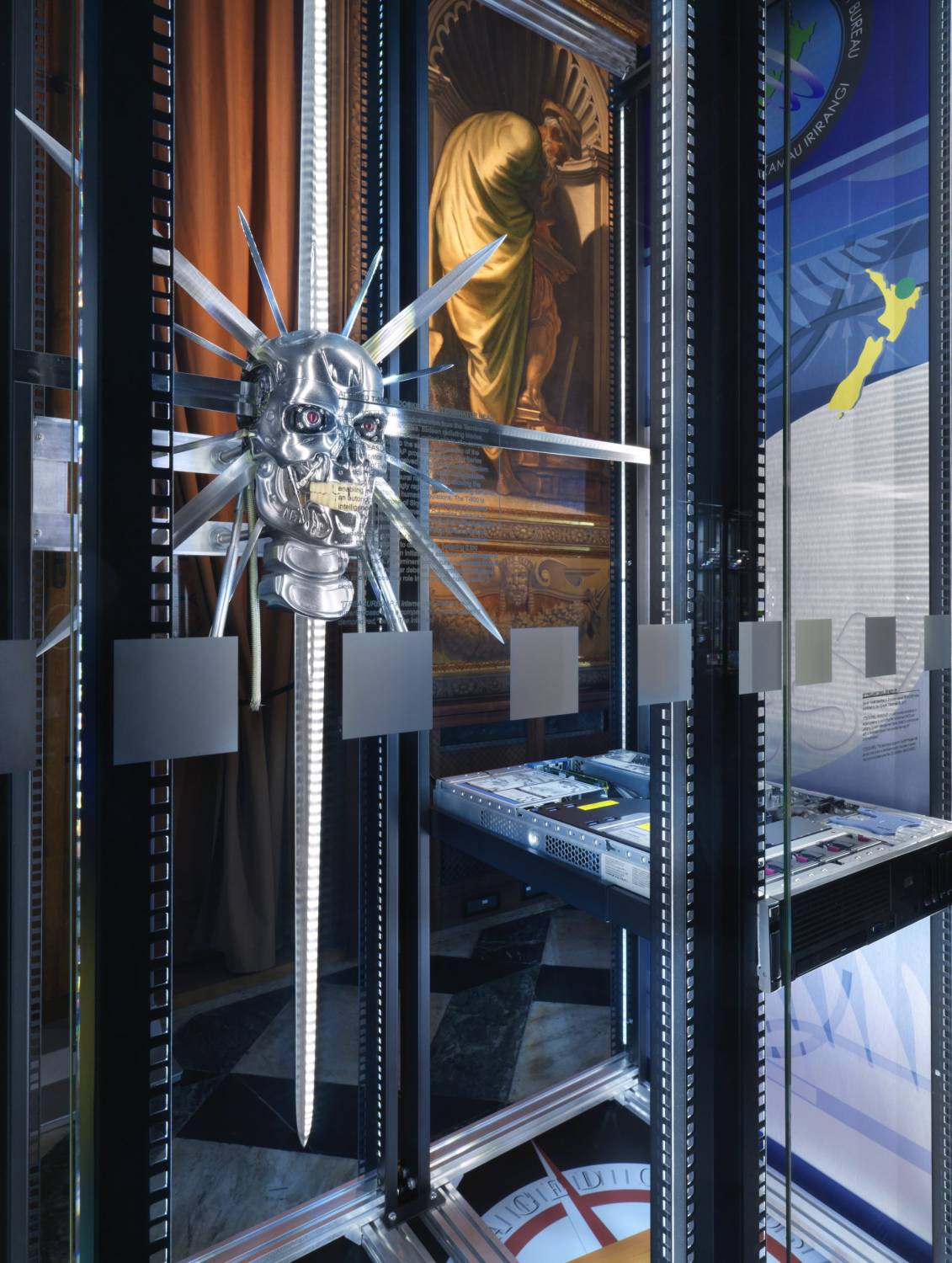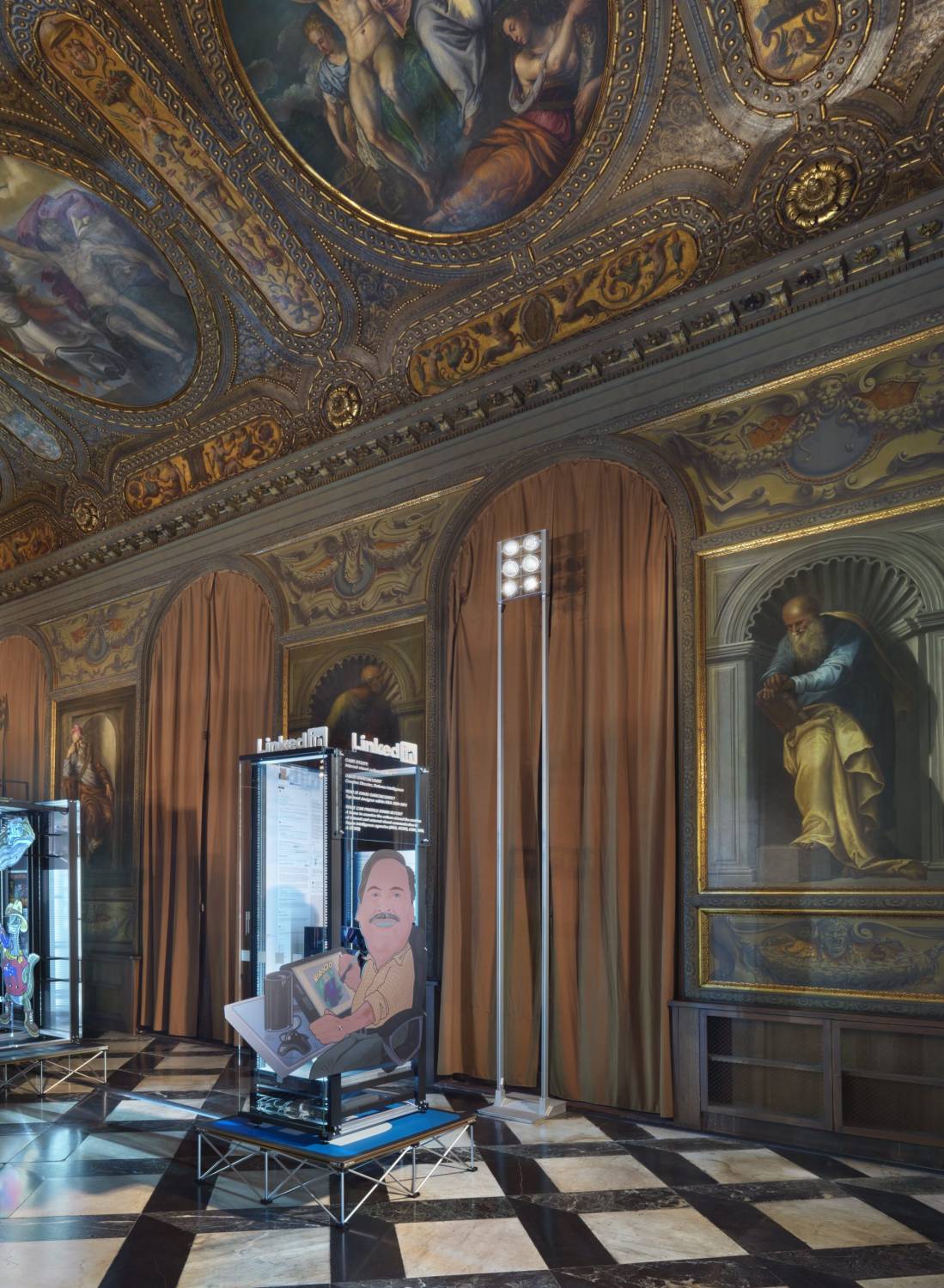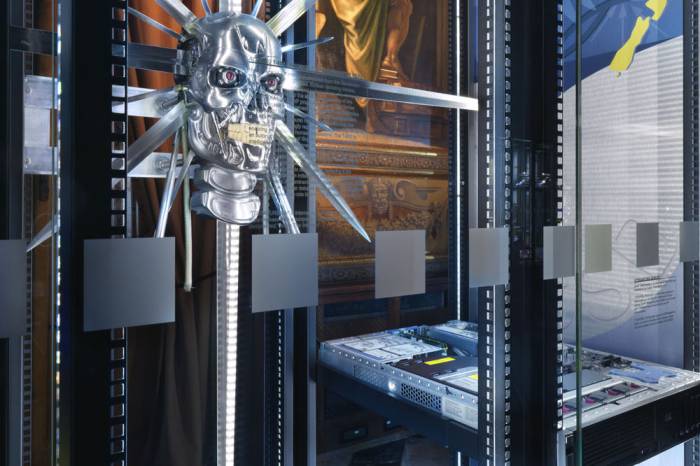The New Zealand pavilion is split across two state buildings: the Biblioteca Nazionale Marciana (Marciana Library), in Piazzetta San Marco, in the heart of the city, and the terminal at Marco Polo Airport, on the outskirts.
In the Library, Denny has installed a server room, with server racks and a workstation. In addition to holding computer equipment, the server racks and workstation double as vitrines, displaying a case study in NSA visual culture, consisting of sculptural and graphic elements based on the work of a former NSA designer and Creative Director of Defense Intelligence David Darchicourt and the Snowden slide archive, suggesting links in iconography and treatment. The server room resonates with the Library’s decorated Renaissance-period interior, with its maps and allegorical paintings—Denny’s inquiry into the current iconography of geopolitical power being framed within an obsolete one.
The Airport terminal—a busy hub for millions of travellers—incorporates restricted spaces, surveillance spaces, and interrogation spaces, and is equipped with high-tech security systems. Denny has ‘dragged-and-dropped’ two actual-size photographic reproductions of the Library’s decorated interior across the floor and walls of the arrivals lounge, traversing the border between Schengen and non-Schengen space. The installation incorporates plaques that reproduce examples of early maps from the Library’s collection, which could be mistaken for advertisements for what’s currently on show there.
Secret Power is site specific, exploring La Biennale Arte di Venezia, the Library, and the Airport as media. Denny hints at geopolitical imperatives that cross-reference and distinguish these frames. Completed in 1588, the Library represents the Republic of Venice as a wealthy world power during the Renaissance. Established in 1895, La Biennale is premised on a model of national representation that seems obsolete today, in a time of cosmopolitan global art. Completed soon after 9/11, the Airport represents a new era of global security.
Denny’s project is a complex puzzle. Each element is nested in and reframed by other elements in an expanding allegory, making interpretation potentially interminable. And yet, despite this, Denny gets us close to his ostensible subject—the visual language of western intelligence agencies. Paradoxically, he places himself and us (as artist and viewers) in positions oddly analogous to these agencies, as we trawl through data and metadata, engaging in analytics, pattern recognition, and profiling, trying to make sense of things.
Secret Power takes its title from investigative journalist Nicky Hager’s 1996 book, which first revealed New Zealand’s involvement in US intelligence gathering.
—Robert Leonard, curator, Secret Power
